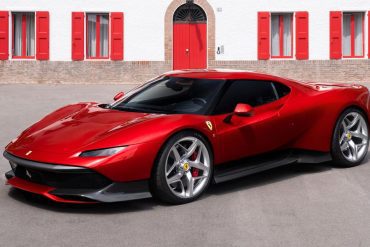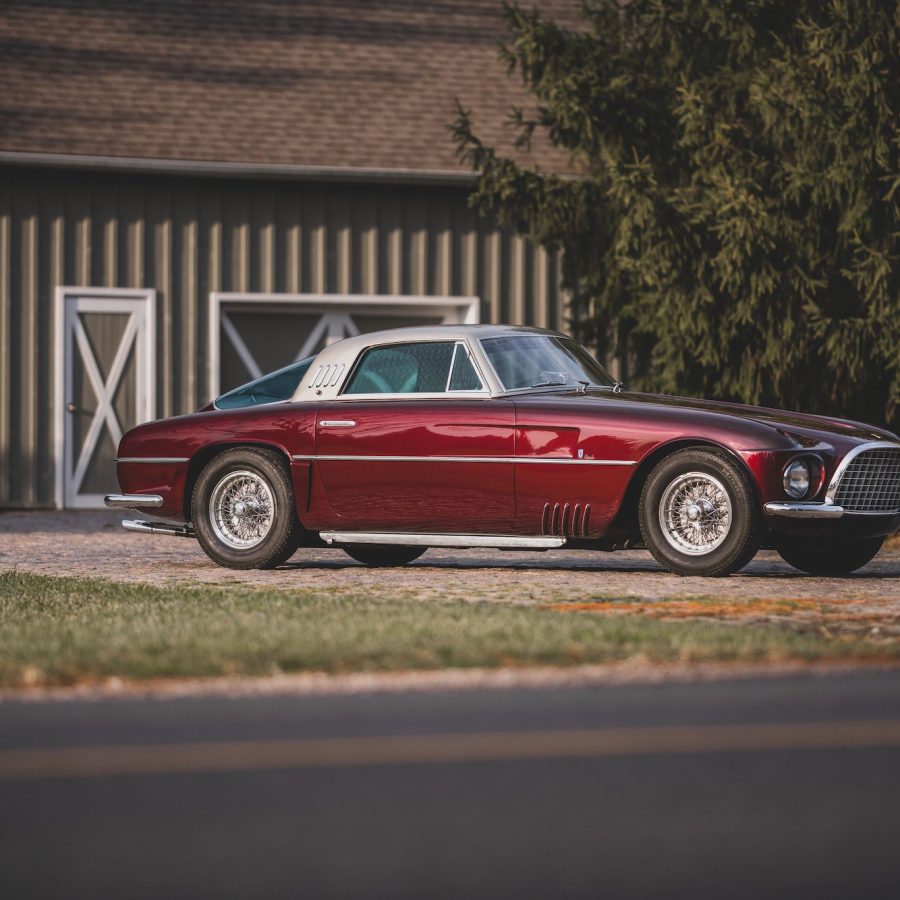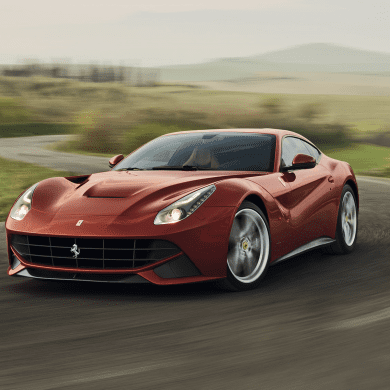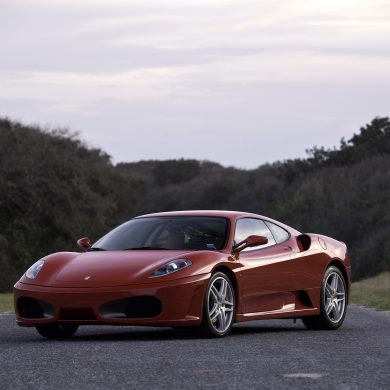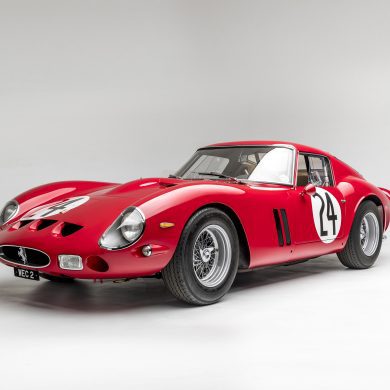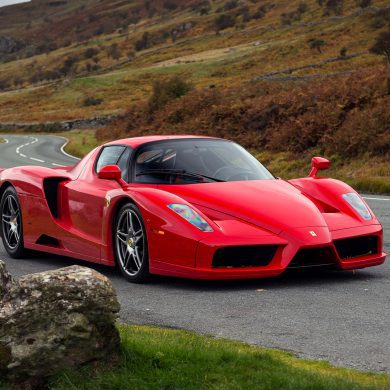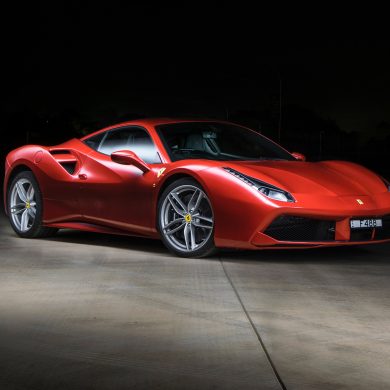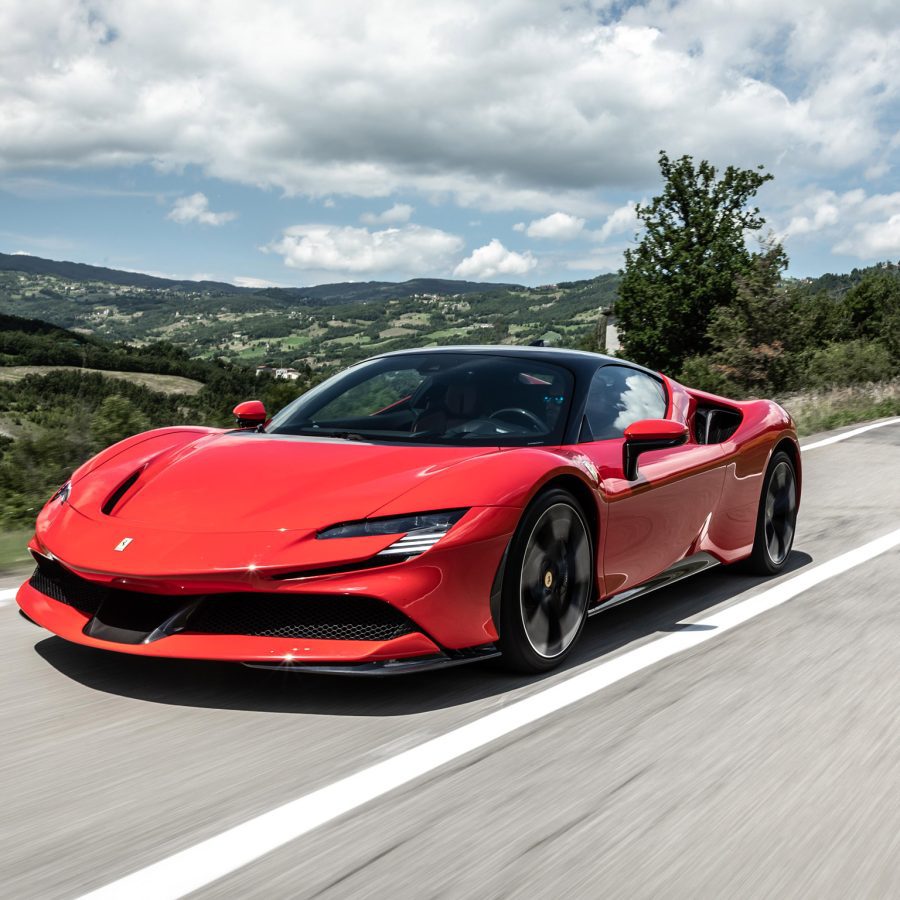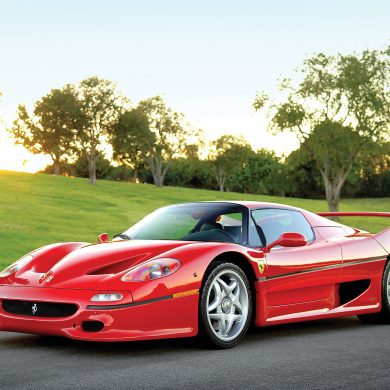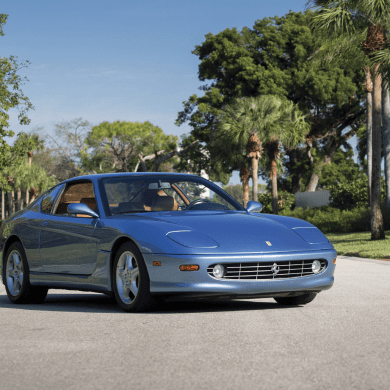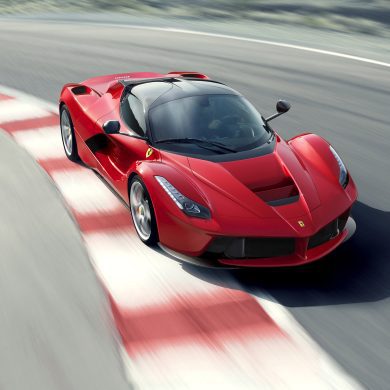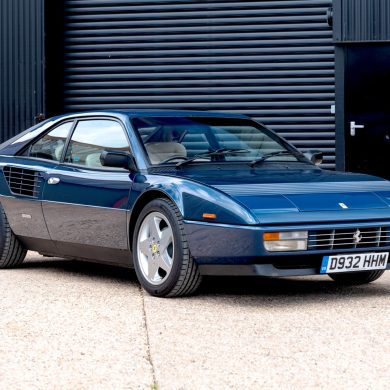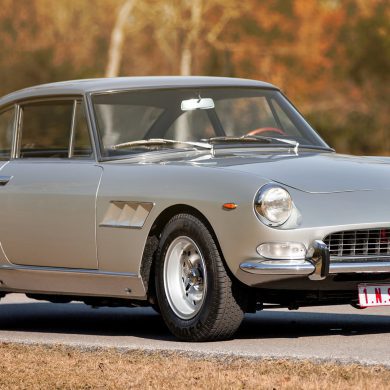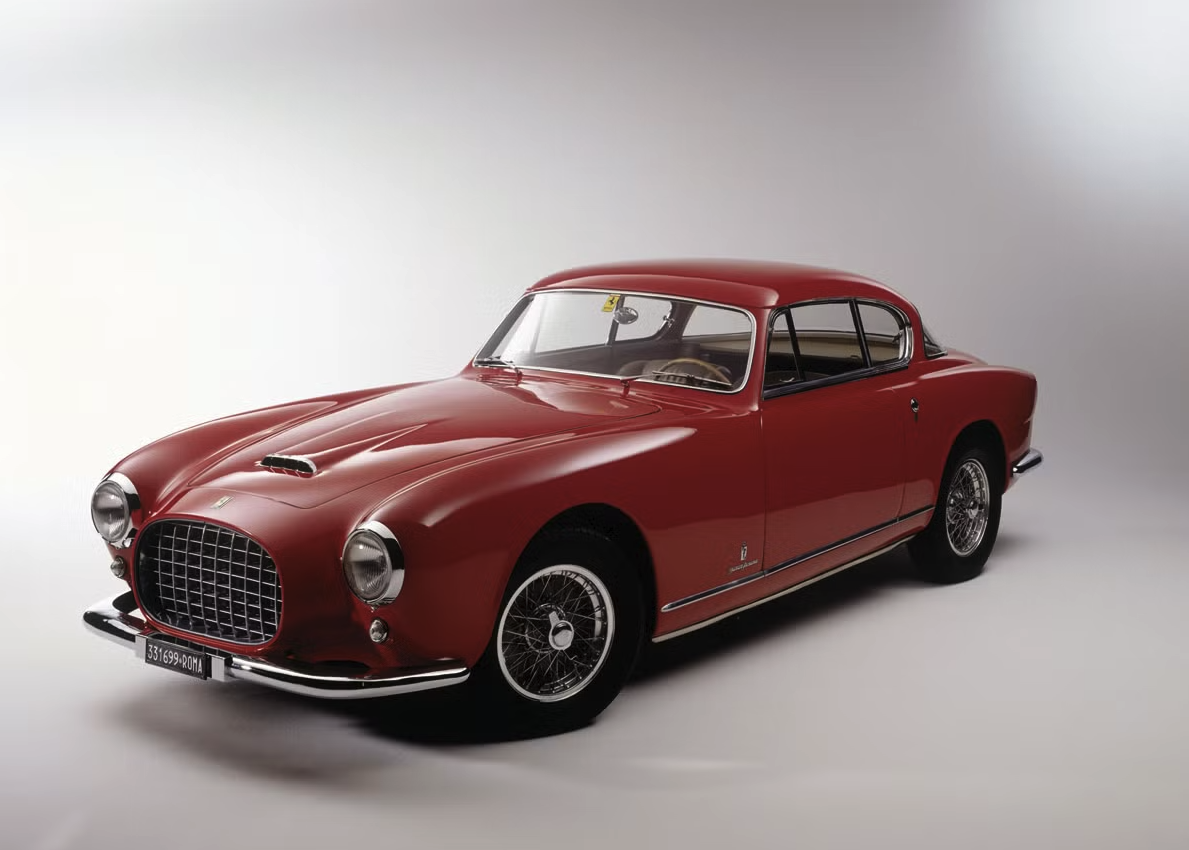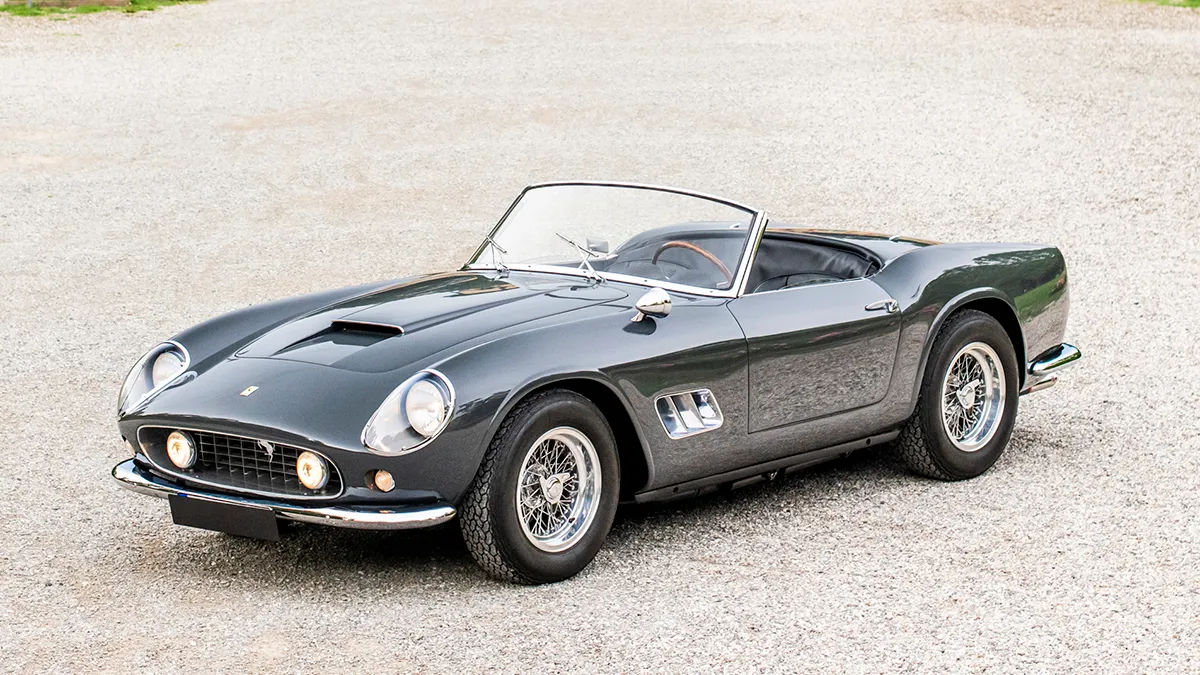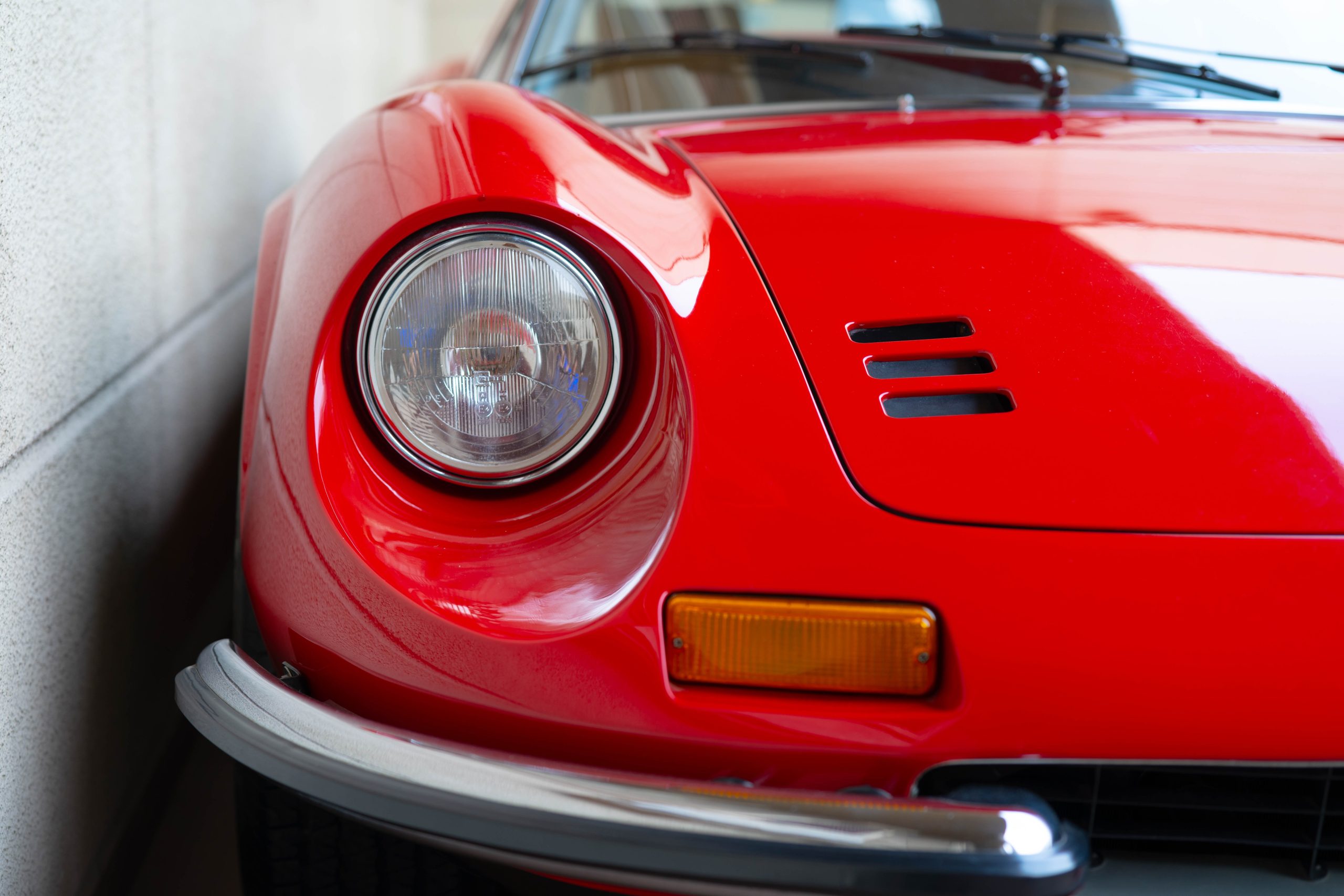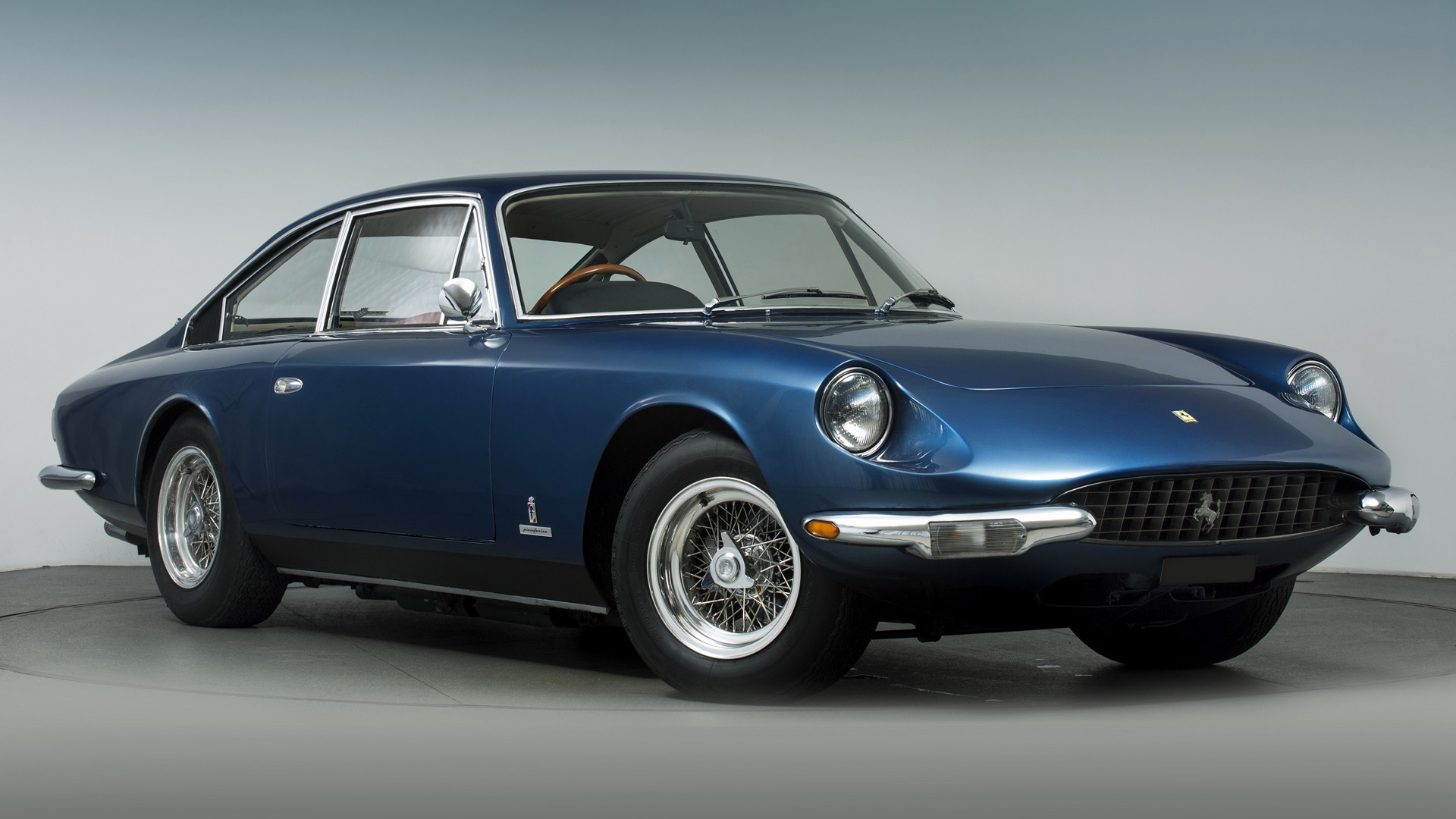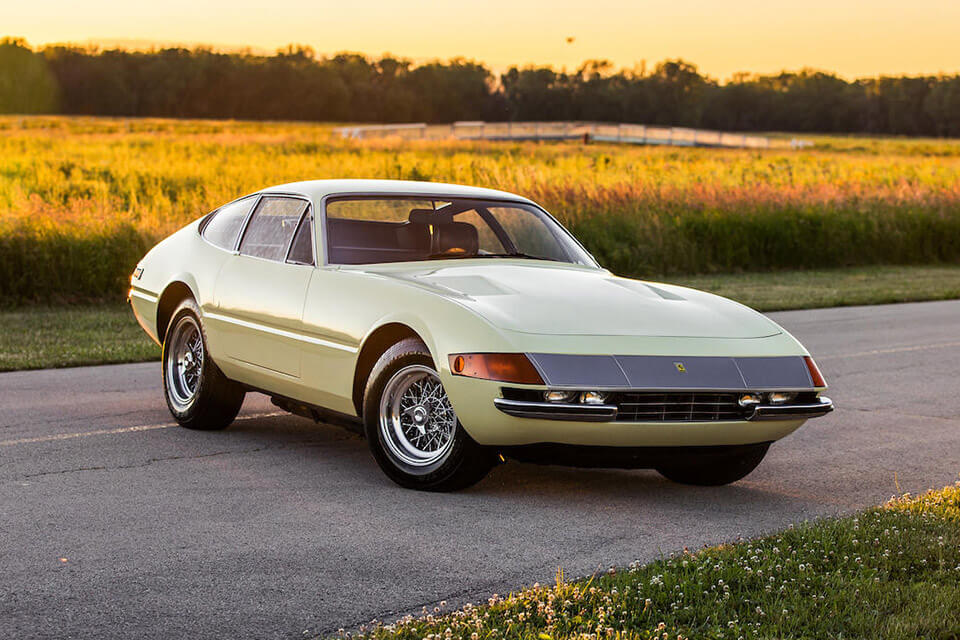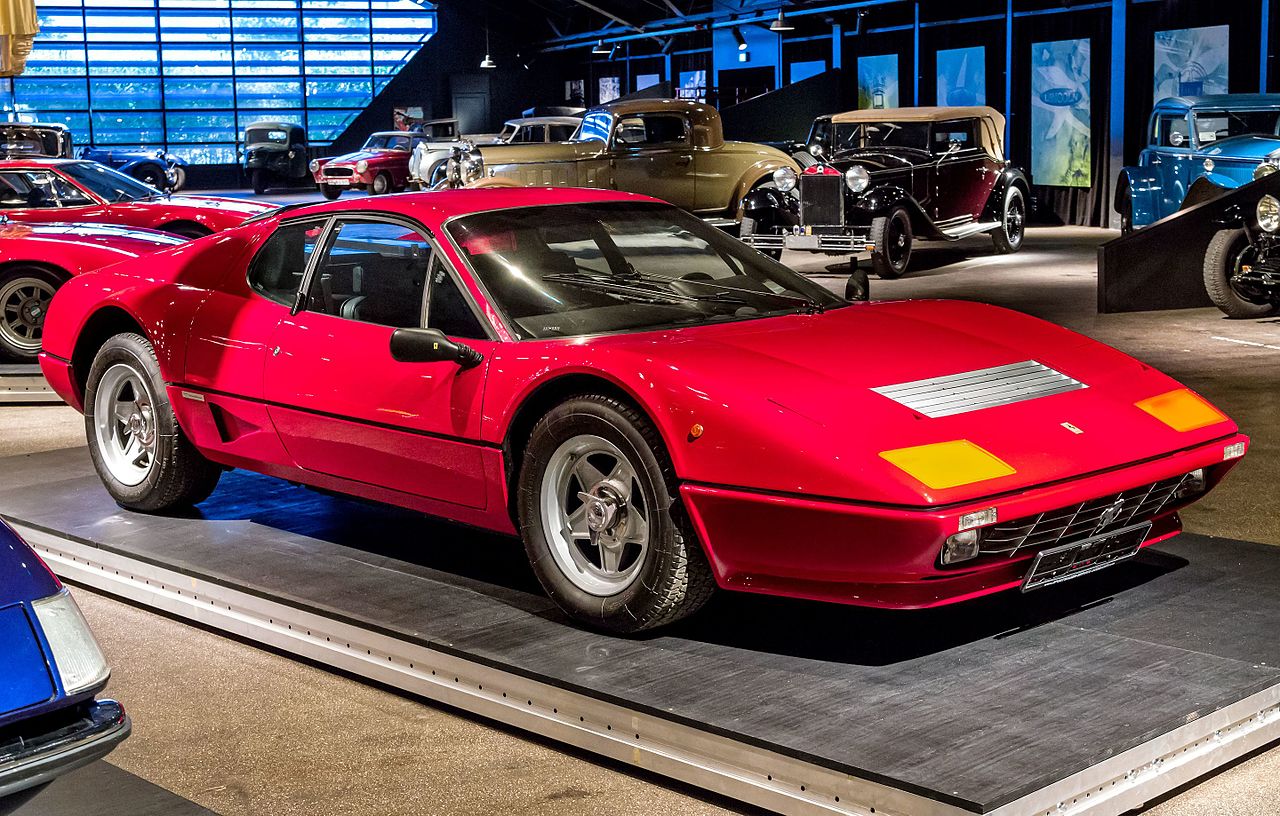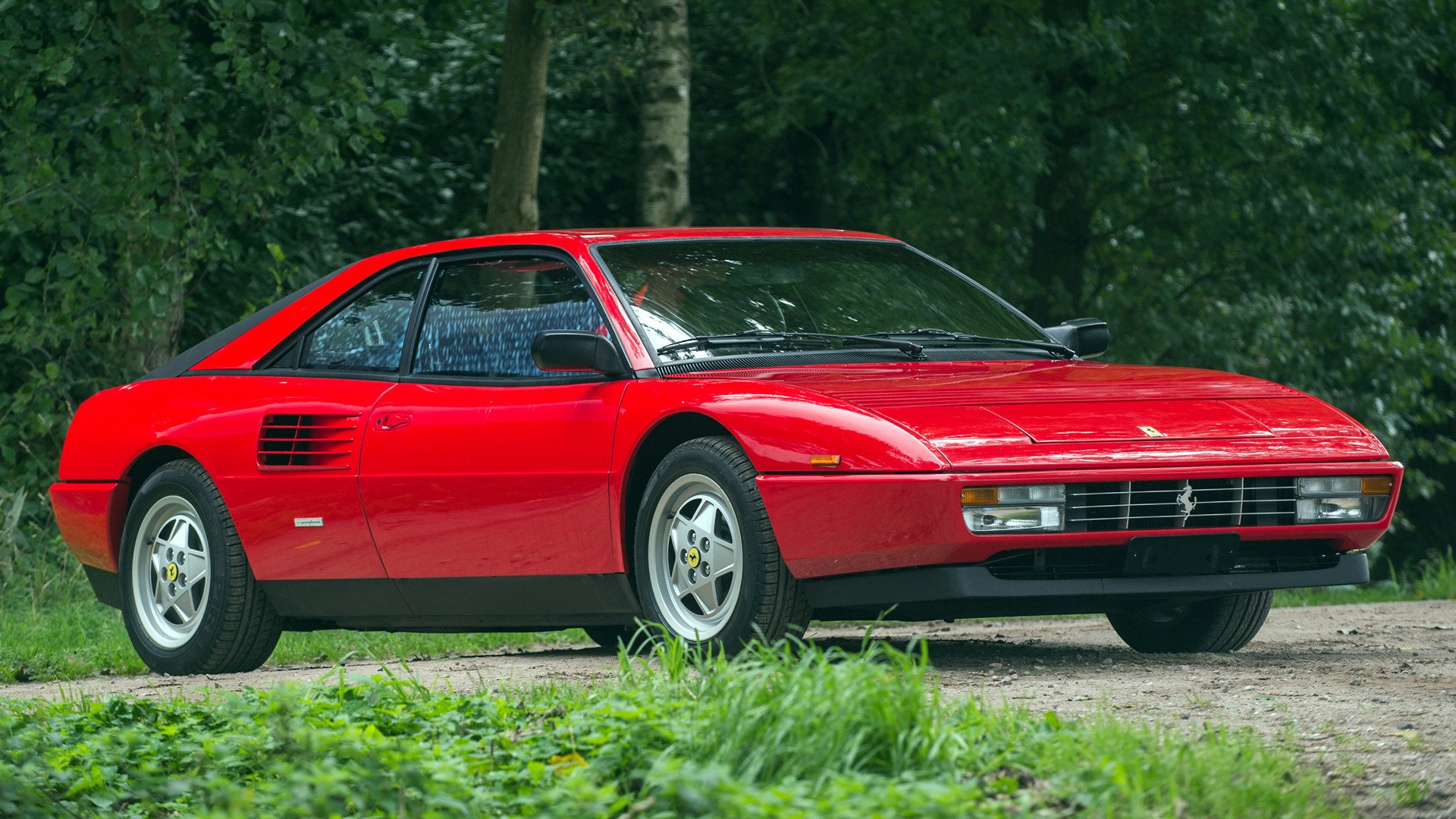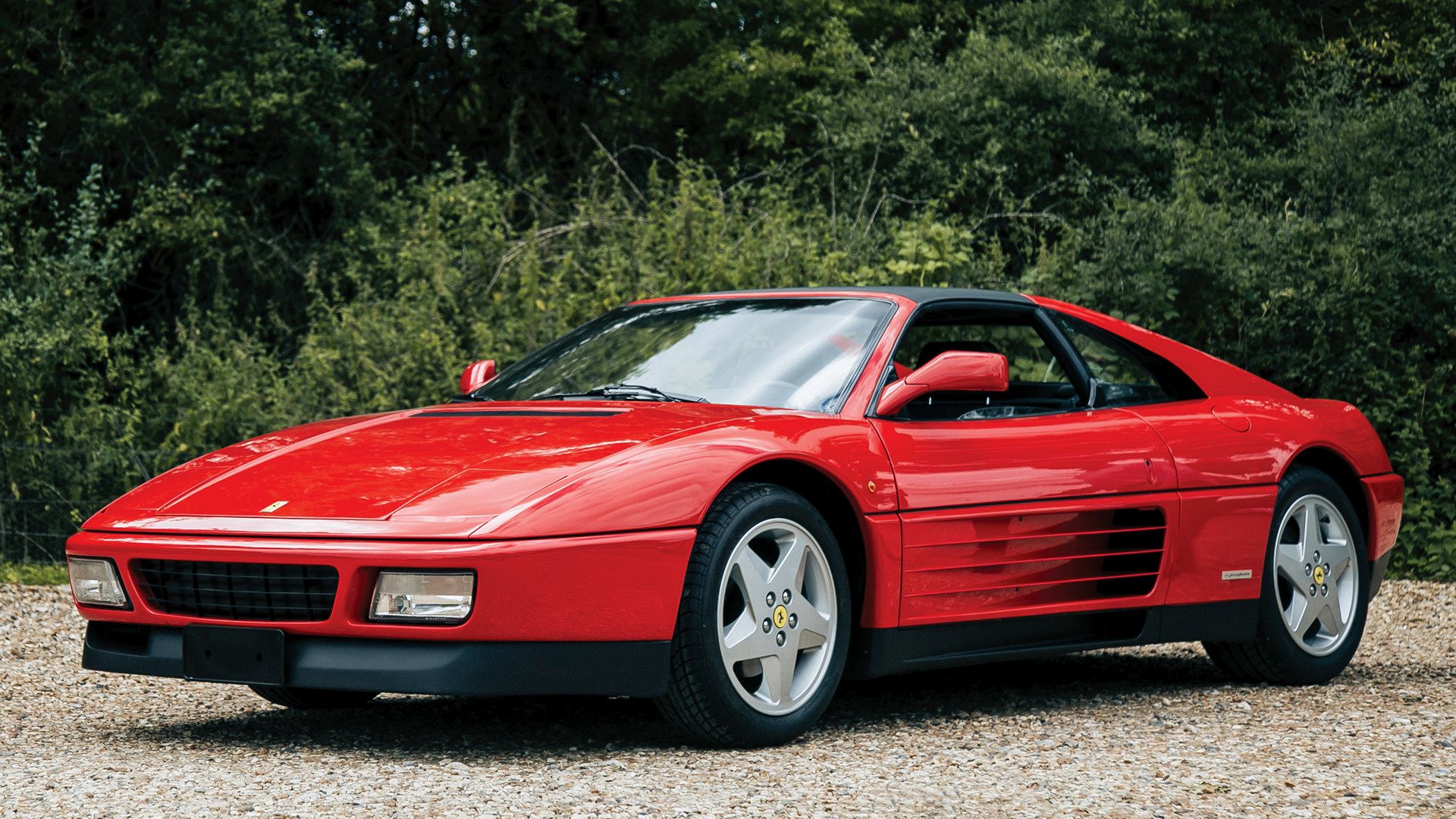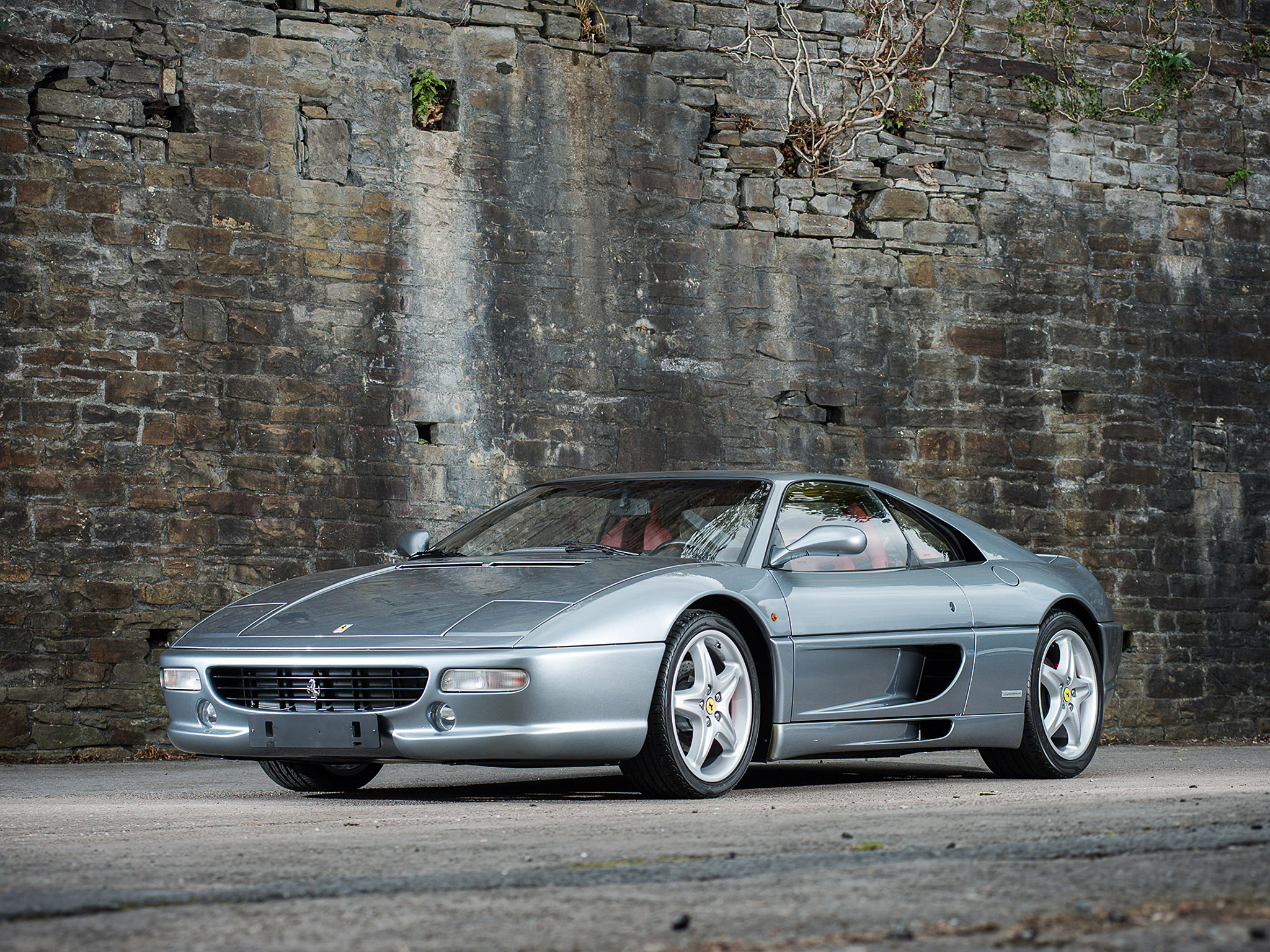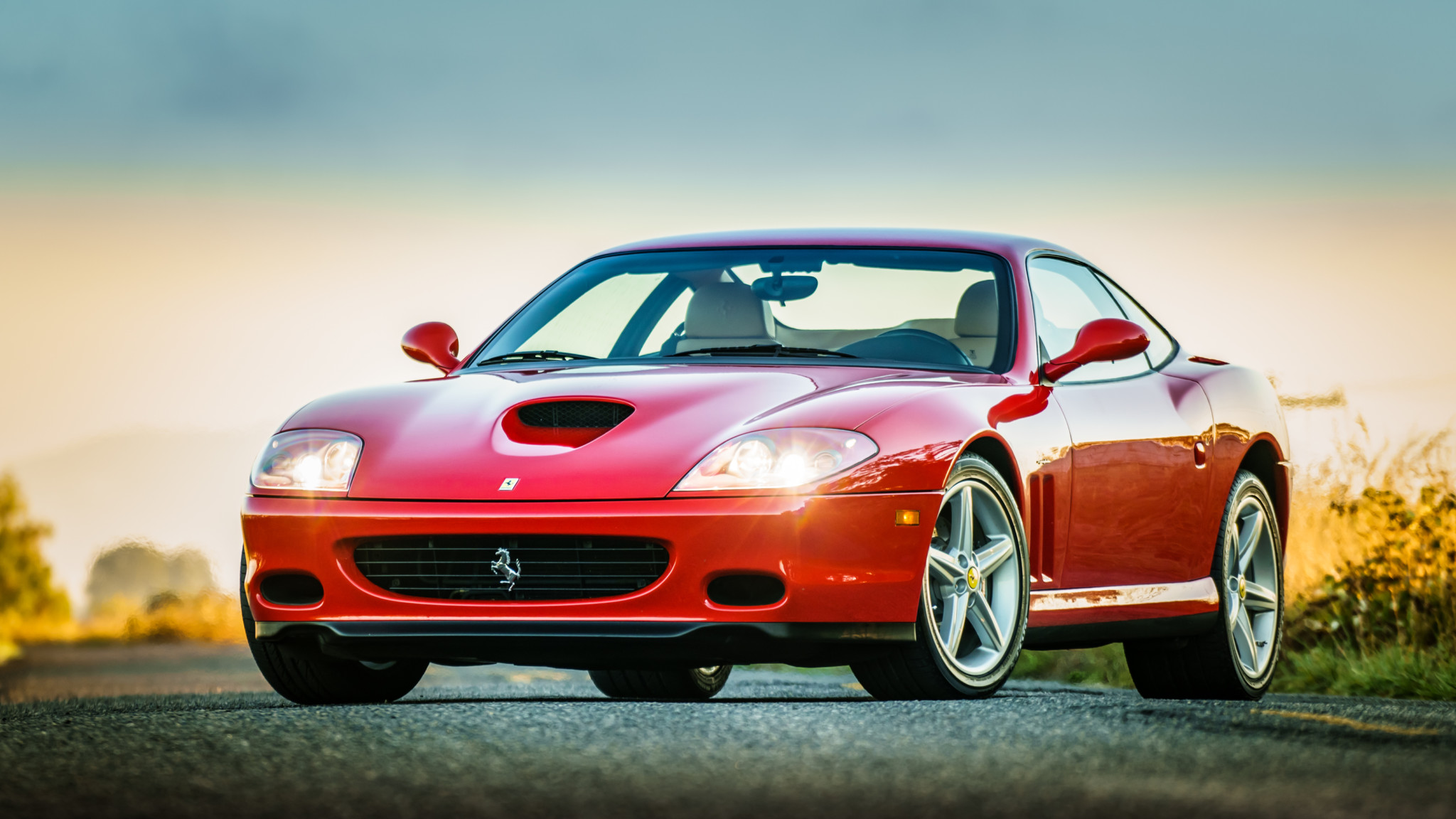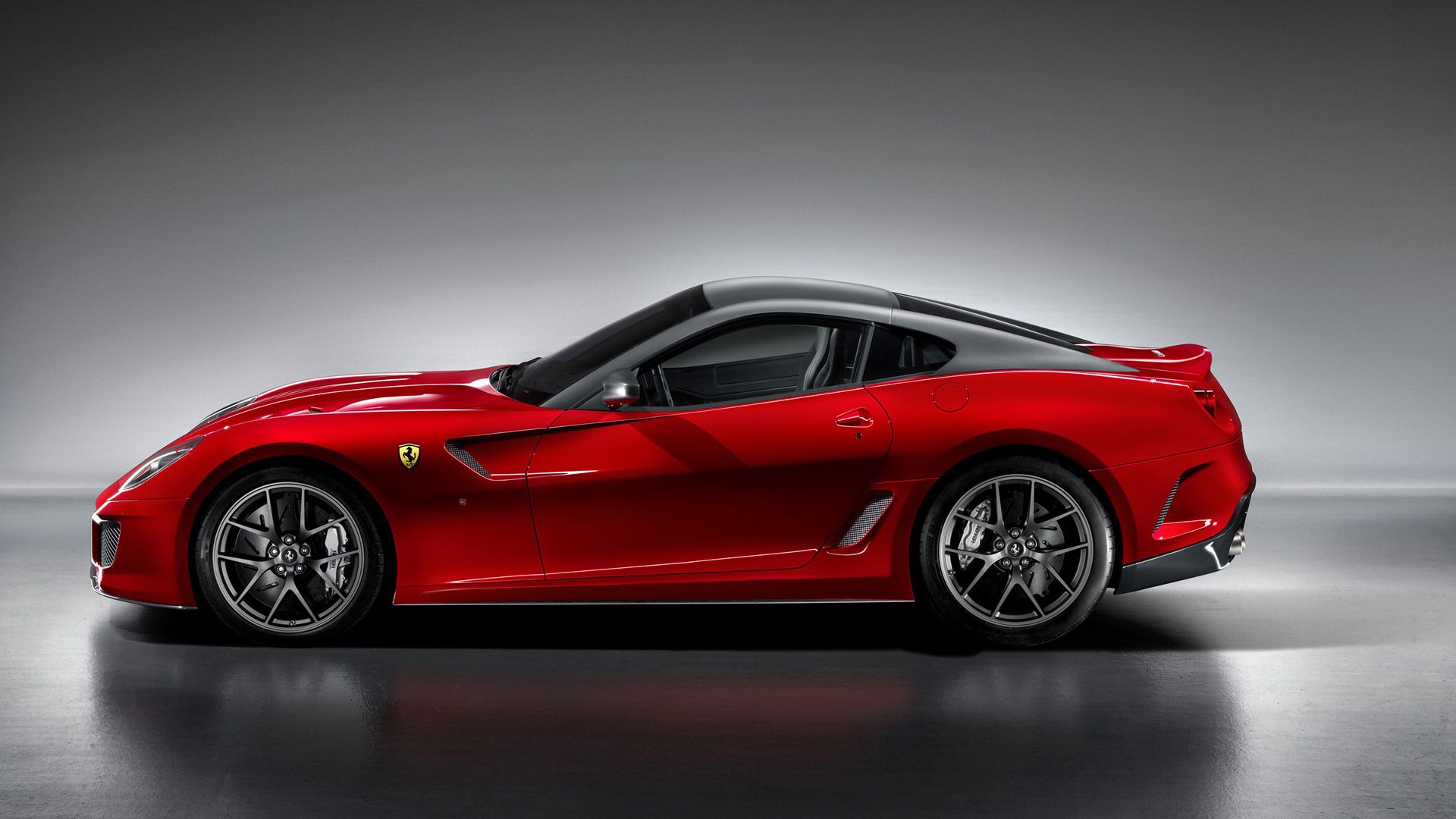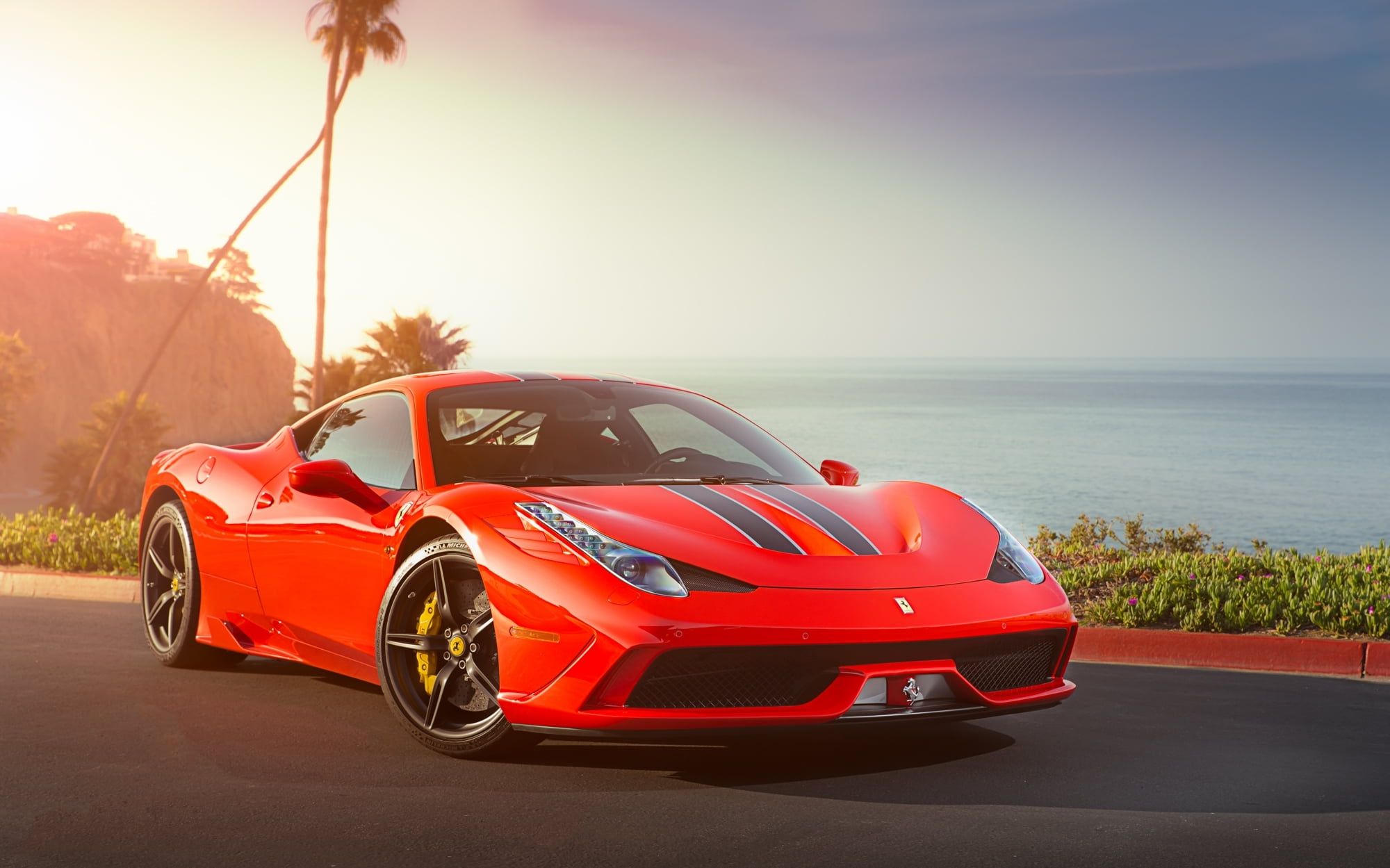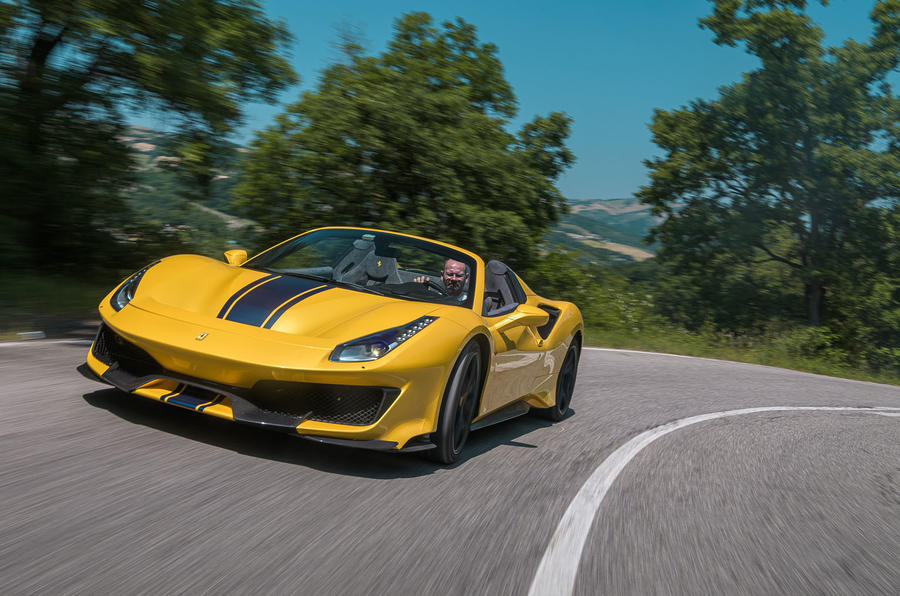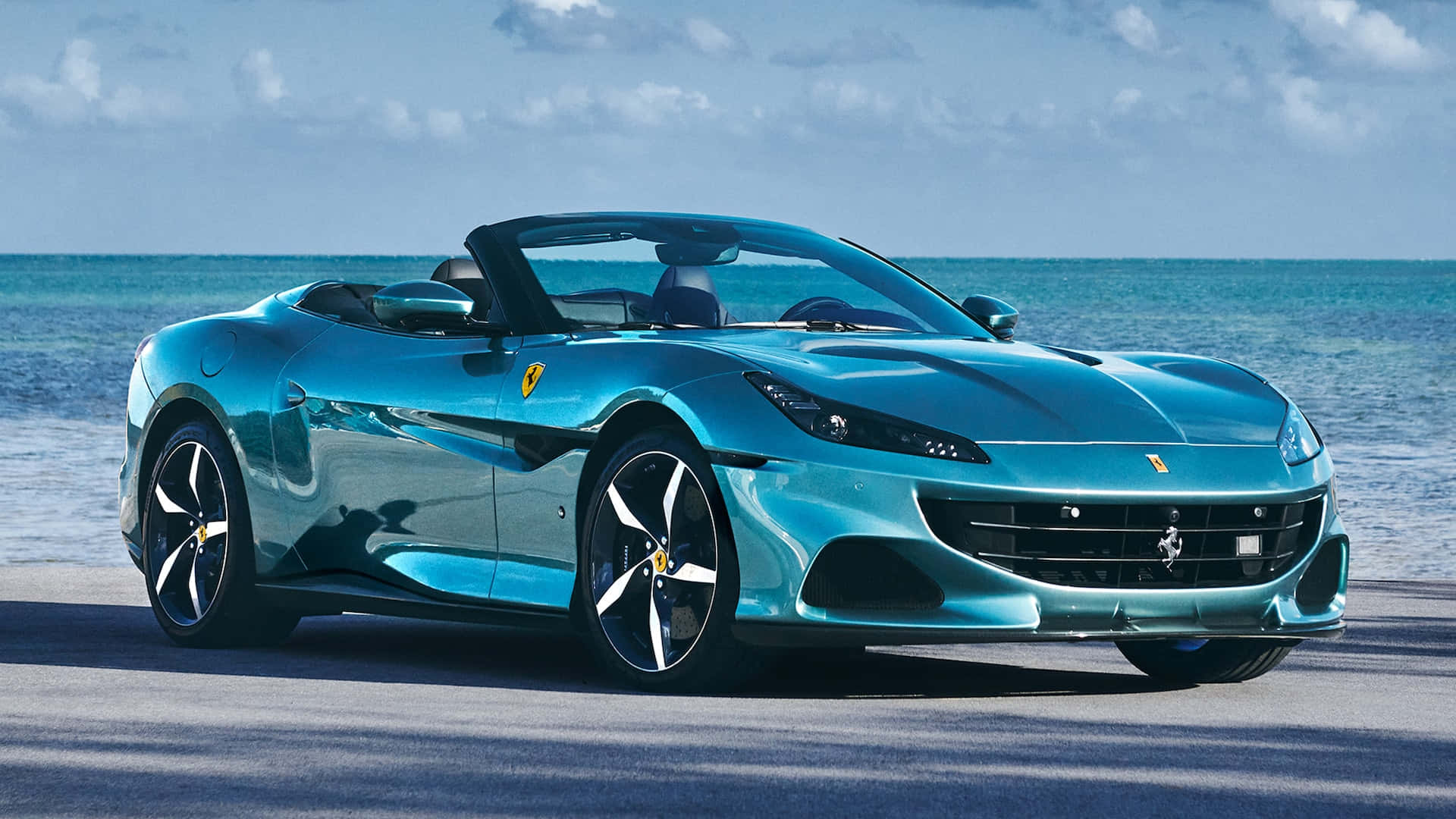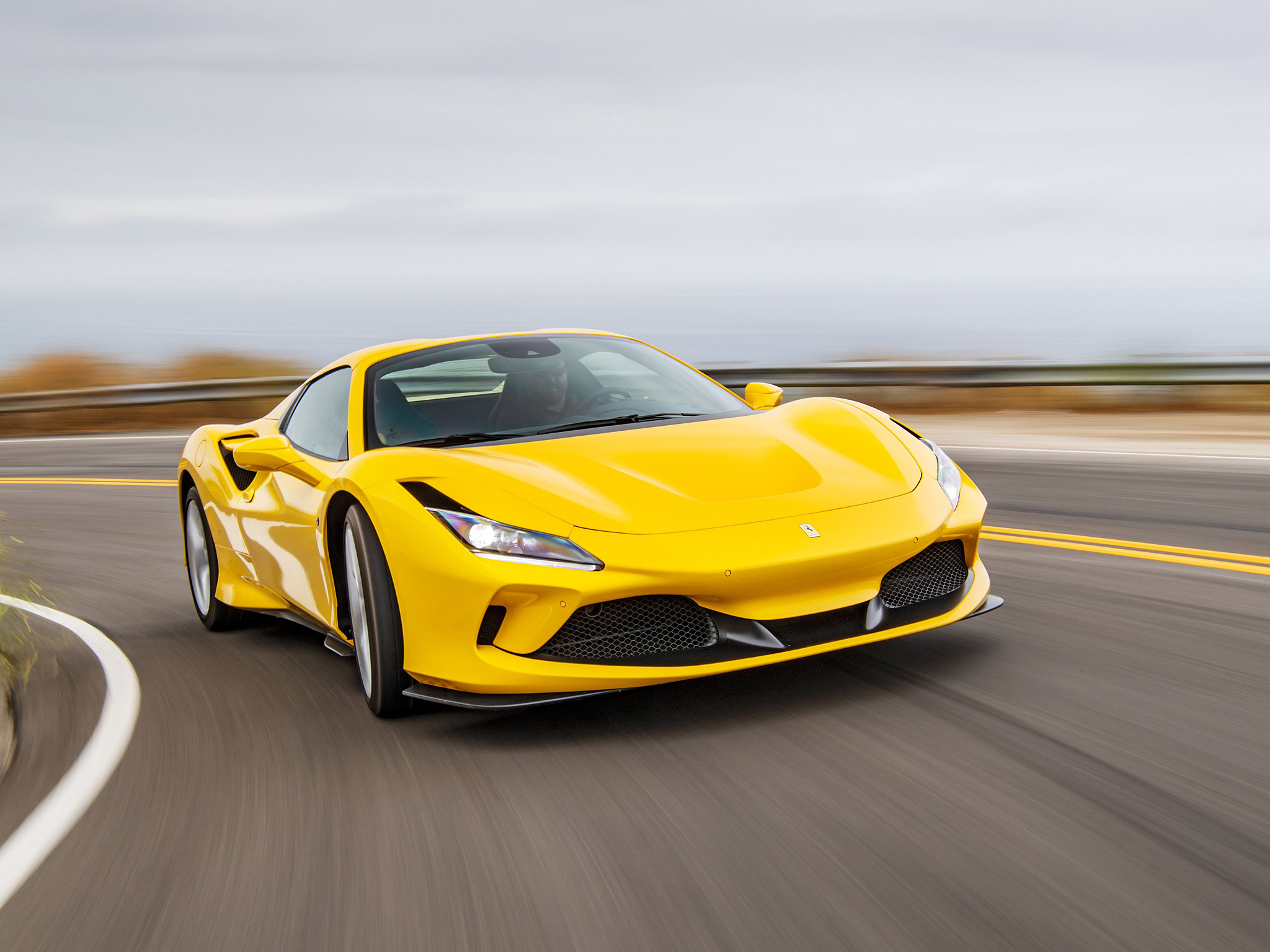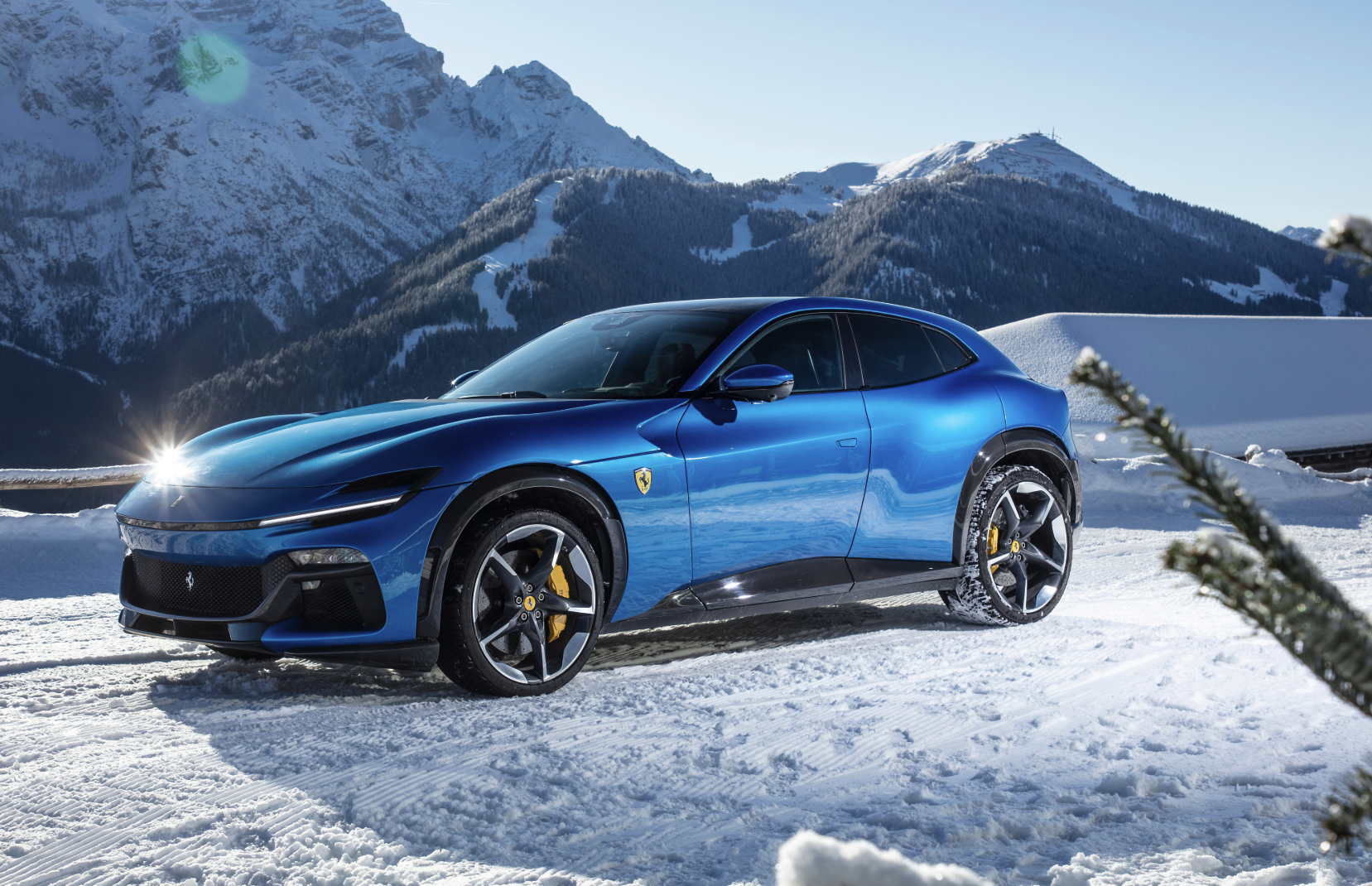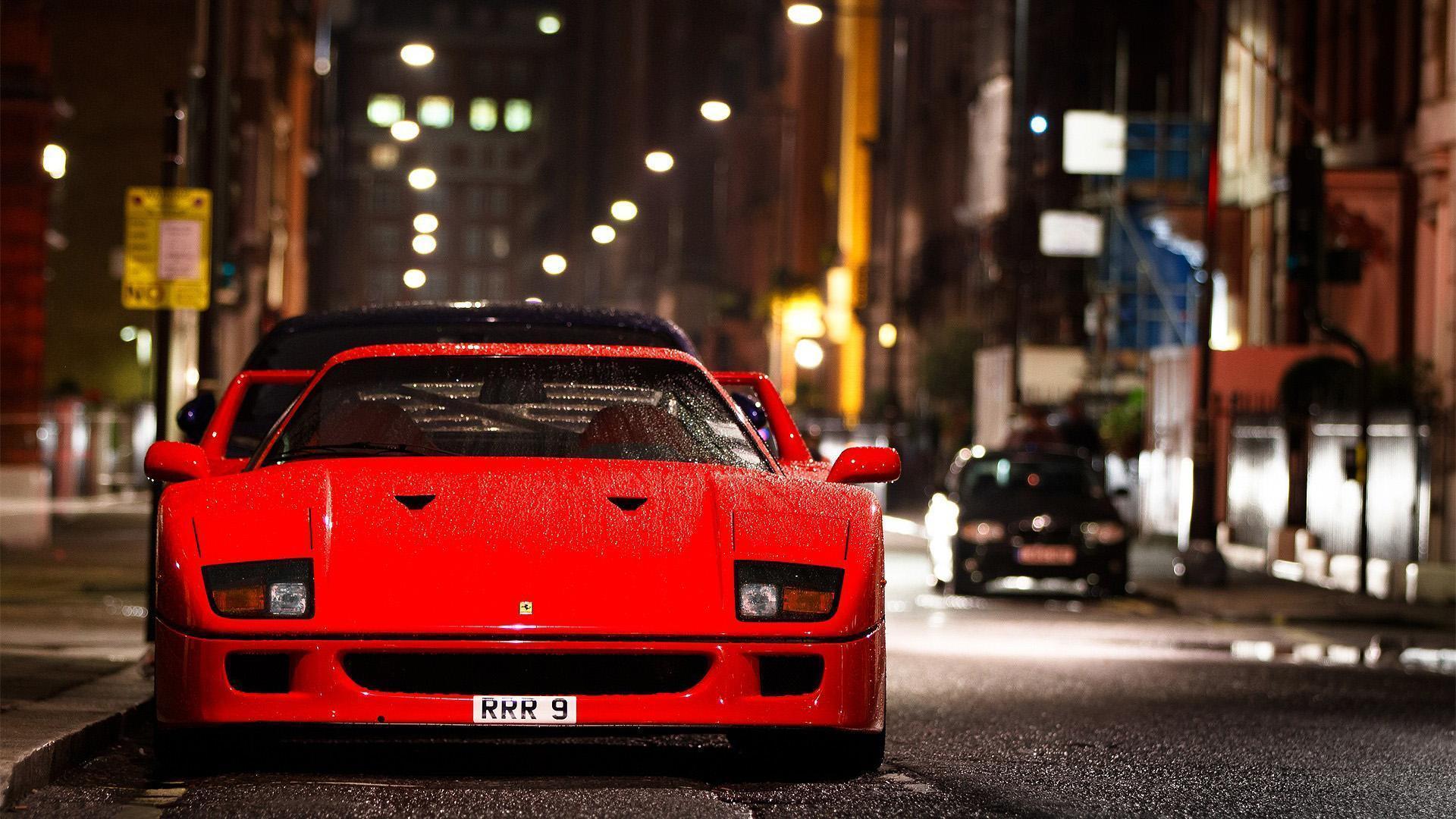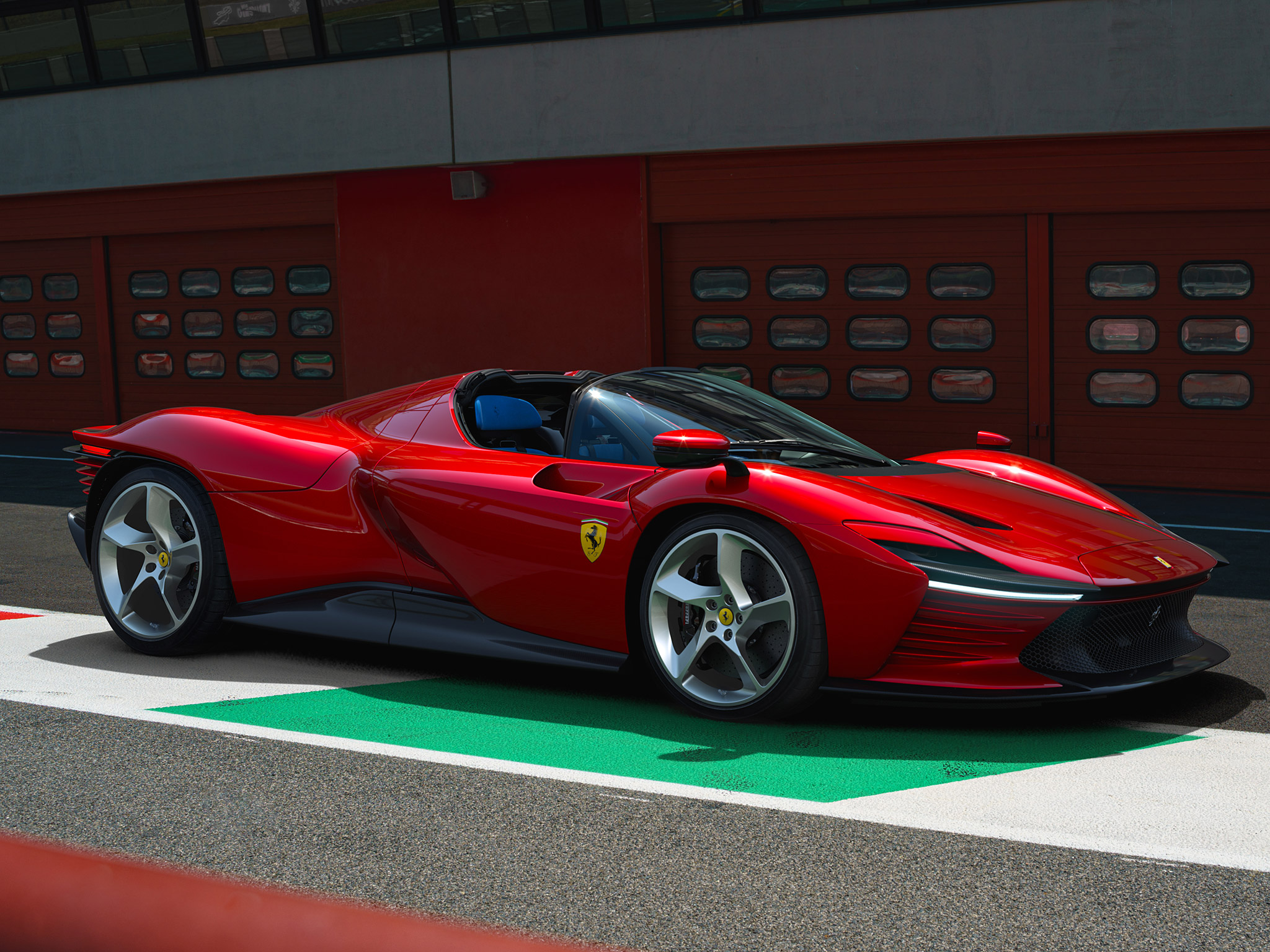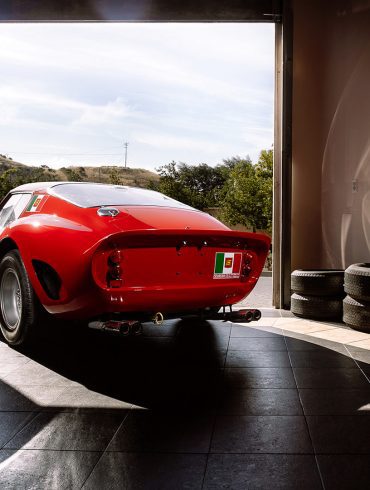Ferrari Models
Model Deep Dives / Production Model List / Race Car List / Concept Car List / The One-Offs List

Ferrari Model List. Every Ferrari, Every Year.
The complete Ferrari model list. Painstakingly researched & updated for each model year. Find the current model list, vintage Ferraris and model lists by year. We took over 70 years of Ferrari amazingness and got it all down on one page. Every production Ferrari ever made. That is right, every single one. For eagle-eyed observers, we split this page into several sub-pages so don't freak out and read on before telling us we missed a Ferrari model.
Founded by Enzo Ferrari in 1939 out of the Alfa Romeo race division as Auto Avio Costruzioni, the company built its first car in 1940. It wasn't till 1948 that we got the first Ferrari road car, the Ferrari 166 Inter. The early Ferrari road cars are hard to figure out. In the early days of Ferrari, having a custom bodywork was the norm. Customers decided on the chassis and engine with the factory and then chose an Italian coachbuilder to make the bodywork. As was typical, a bare chassis was delivered to the coachbuilder of the customer's choice. Since the 1970s things have settled down, so it is easier to organize Ferrari models and harder to miss any. We grouped most of them by family/platform since that is the most logical way. Current models are first, and then we take you through all the legacy and discontinued Ferrari models. Classic V12 front-engined Ferraris were grouped together. Also worth noting, if a model is still in production, then it didn't get its own section yet.
If you have visited this page before you will notice some changes. First of all, we added some basic information and a description to each Ferrari model to give you more relevant data. There were also too many models on this page so we split the page up. We create a separate page for Ferrari Race Cars, where we did into the early Ferrari sports car prototypes and the full list of Ferrari Formula One models too. We create a page for official Ferrari concept cars and the current Ferrari model lineup, as well as a page dedicated to the iconic Ferrari supercars and hypercars. Finally, we create a page for the very rare, very special Ferrari one-offs and Ferrari limited edition models (think less than a few dozen unit cars).
Ferrari Production Cars
Other Ferrari Pages
Current Models
Ferrari Icona Series
Ferrari Supercars
Legacy Models
Classic Ferrari - The Early Years
In 1945, Ferrari began work on the 12-cylinder engine the company would be famous for, and in 1947, Enzo Ferrari drove the first 125 S out of the factory gates. Driver Luigi Chinetti was the first to import Ferrari cars to the U.S. in the late 1940s, including the first production Ferrari, the 166 Inter. During the 1950s, Ferrari had legendary engineers like Lampredi and Jano on the payroll, and bodies designed by the legendary Pinin Farina. Every time a race car was improved, the road car was the beneficiary. That cycle was instrumental in the success of Ferrari and why its road cars grew in legend and desire amongst the well-healed.
Ferrari 166 Inter (1948 - 1950)
Ferrari 195 Inter (1950 - 1951)
Ferrari 212 Inter (1951 - 1952)
Ferrari 212 Export (1951 - 1952)
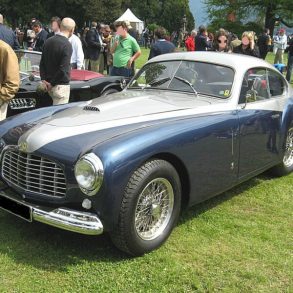
Ferrari 166 Inter
The Ferrari 166 Inter was Ferrari’s first true grand tourer and Ferrari’s first 12-cylinder engine to reach 2-litre capacity. The 166 Inter was an evolution of the 125 S and 166 S racing cars, it was a sports car for the street. The car was designed by Carrozzeria Touring of Milan. It was a pivotal model for Ferrari because it was the first Ferrari to do well in the United States.
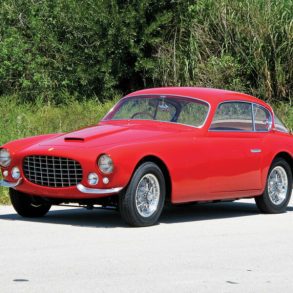
Ferrari 195 Inter
Like all very early Ferrari’s the 195 used a V12 engine designed by Gioacchino Colombo. The relatively small V12 engine was capable of high rpm. The 195 was the same as the Ferrari 166 with an enlarged engine and wheel base. Two models were offered, the 195 S or Sport had slightly more power and were bodied by Touring using prewar Superleggra technique.

Ferrari 212 Inter
Alongside his successful competition cars, Enzo Ferrari sold detuned race cars for road-going clientele and the 212 Inter was a classic example. It replaced the very similar type 166 Inter, and its racecar brother, the 212 Export, wasn’t that far ahead. When there was a short supply of Ferraris, the road-going Inters served double-time and became race cars.

Ferrari 212 Export
In 1951, the top of the range was represented by the 4.1-litre, 340 America. Ferrari also sold the 212 chassis as a customer racecar. It sold as the 212 Export and was produced alongside the 212 Inter, which was aimed towards the touring customer. Some cars with destinations within Europe but outside Italy were given Export Europa numbers.
Ferrari America
Ferrari America is a series of flagship grand touring Ferrari models primarily built for the North American market in the 1950s and 1960s. The America models were equipped with large V12 engines and often had custom bodywork done by famous coachbuilders in Italy. The Ferrari America series was a popular success, and the cars are now highly sought-after by collectors. They are considered to be some of the most beautiful and desirable Ferraris ever built. Note, we haven't included the one-off specials that were created and considered part of the America cars.
Ferrari 342 America (1952)
Ferrari 375 America (1953 - 1954)
Ferrari 410 Superamerica I (1955)
Ferrari 410 Superamerica II (1956 - 1957)
Ferrari 410 Superamerica III (1958 - 1959)
Ferrari 400 Superamerica Series I (1959 - 1962)
Ferrari 400 Superamerica Series II (1962 - 1964)
Ferrari 500 Superfast (1964 - 1967)
Ferrari 365 California (1966 - 1967)

Ferrari 342 America
Interest in Ferraris was growing among potential clients, but some were wary of the competition levels of performance provided by engines which reached the market with very little in the way of detuning. To meet the needs of this type of Client, Ferrari introduced the 342 America, a softer four-seater featuring a more flexible engine, a new 4-speed gearbox and more user-friendly handling. Only 6 units were made.
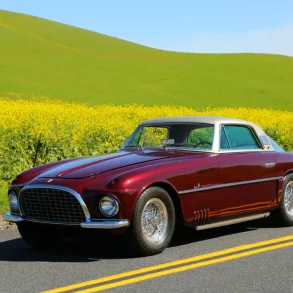
Ferrari 375 America
Ferrari's top model in 1953 was the 375 and it was reserved for their most important clientele. Each was custom built and and some were completely one-of designs. Like the 342 America it replaced, the 375 was based on a detuned version of the Lampredi Grand Prix engine in a typical tubular steel chassis. The majority of 375s had either three or five-window coupe bodies by Pinin Farina, though Vignale built four cars.
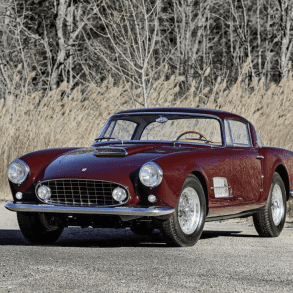
Ferrari 410 Superamerica I
Ferrari produced another line of America cars, beginning with the 1955 410 Superamerica. The engine, based on a single plug 410 S powerplant, was now up to 5.0 L with 340 PS (250 kW; 335 hp) at 6,000 rpm produced thanks to triple Weber 40DCF carburettors. As the most expensive Ferrari available, the 410 Superamerica replaced the 375 America after only eleven examples had been made.
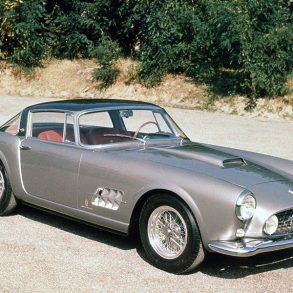
Ferrari 410 Superamerica II
After a first series of 410 Superamericas, Ferrari updated the design with a shorter wheelbase. Only very few Series II cars were made before the Series III design came out at the 1958 Salone di Torino. Like the preceding 16 cars, the Series II belonged to Ferrari’s ‘flagship’ America series that offered the highest levels of sophistication.

Ferrari 410 Superamerica III
The Series III trailed two earlier series. Built as the ultimate grand tourer, each car was custom ordered to receive unique bodies and many were made for auto shows or Ferrari’s best clients. Power came from a potent version of the 4.9-liter engine that was a single-plug variant of the same Lampredi-designed engine that powered Ferrari’s biggest and baddest racecars.

Ferrari 400 Superamerica Series I
The large, fast and luxurious 400 Superamerica replaced the outgoing 410 model and continued Ferrari's tradition of custom-built supercars. Each was specially built for their first owner and no two were exactly alike. Unlike the Ferrari 410 Superamerica Series III, the 400 Superamerica used a version of the Colombo short-block V12.
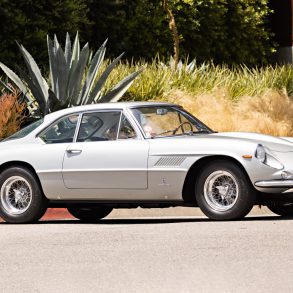
Ferrari 400 Superamerica Series II
In a three year period, Ferrari produced only six cabriolets on the Superamerica Series I chassis. Other chassis in the series of 25 cars included the more popular Coupé Aerodynamico body or were built as a one-offs. By September of 1962 Ferrari updated the 400 Superamerica chassis to have a longer wheelbase of 2600 mm and these became the Series II.

Ferrari 500 Superfast
The 500 Superfast was Ferrari's flagship tourer that took off from where the 400 and 410 Super America series ended. It was Ferrari's ideal cruiser with a large-displacement V12 and ample cabin space. Twice as expensive as the more sporting 275 GTB, these cars were seldom ordered and only made two per month by Pininfarina.
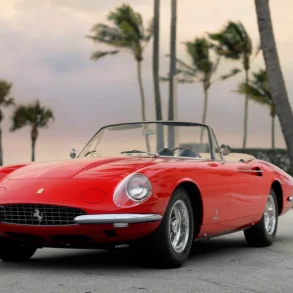
Ferrari 365 California
Shortly after the last 500 Superfast was made, the 365 California was announced as the model's successor. It was the continuation of a series of limited production cars which included the 410 and 400 Superamercas. To keep costs down, but exclusivity high, the 365 California was only offered to select VIP clients of Ferrari. It was basically a reworked 330 GT chassis with Pininfarina body.
The Ferrari 250 GT Cars
The Ferrari 250 series, produced from 1952 to 1964, is arguably the most diverse and significant family of cars in Ferrari's history. It wasn't just one car, but a whole range of models, each with its own distinct personality and purpose. The 250 design was successful both on the road and on the track. A number of GT models were built in varying states of road or racing trim. Below we share the road cars which are some of the most highly prized collector cars around.
Ferrari 250 Europa (1953)
Ferrari 250 Europa GT (1954 - 1955)
Ferrari 250 GT Coupé Boano (1955 - 1957)
Ferrari 250 GT Coupé Ellena (1957 - 1958)
Ferrari 250 GT Coupé (1958 - 1960)
Ferrari 250 GT Berlinetta (Tdf) ( 1956 - 1963)
Ferrari 250 GT Cabriolet Series I (1957 - 1959)
Ferrari 250 GT California Spyder LWB (1958 - 1960)
Ferrari 250 GT Cabriolet Series II (1959 - 1962)
Ferrari 250 GT California SWB (1960 - 1963)
Ferrari 250 GT 2+2 (GT/E) (1960 - 1963)
Ferrari 250 GT Berlinetta "Interim" (1959)
Ferrari 250 GT SWB Berlinetta ‘Lusso’ (1960 - 1962)
Ferrari 250 GT Berlinetta Lusso (1962 - 1964)
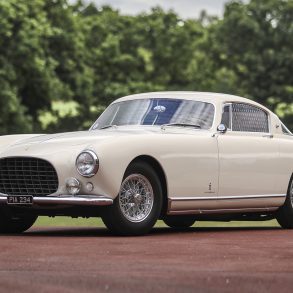
Ferrari 250 Europa
In many ways, the Europa was Ferrari’s first grand touring car. It was the first built with no racing intentions and, due to a new relationship between Pinin Farina and Ferrari, its style was more uniform than any previous series. Compared to the 212 Inter it replaced, the Europa was a much larger car. Only a handful of cars were built before a much more successful second series of cars were produced.

Ferrari Europa GT
In 1954, Ferrari heavily modified their 250 Europa to accept the new short-block Colombo V12. The 250 Europa GT was seen as a road-going version of the 250 MM race car, and also as a second series to the 250 Europa. Despite having a near-identical body (almost all were by Pininfarina), the Ferrari Europa GT was much different under the skin compared to its predecessor.

Ferrari 250 GT Coupé Boano
Ferrari was very serious about producing the 250 GT Coupe in large numbers, so much so Pinin Farina couldn’t handle the expected production workload. Ferrari instead turned to Mario-Felice Boano for production of the bodies and interiors based on the Pinin Farina design. Boano had both a design house in Turin and a production plant in Brescia that could handle large orders.
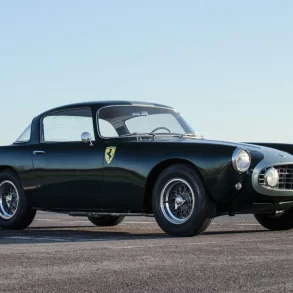
Ferrari 250 GT Coupé Ellena
Boano gladly accepted the order from Ferrari which was significant. Because Boano acted as a subcontractor, his name was never mentioned in the promotion of the model. Eventually, 65 cars were built at Boano’s facility until Ellena took over the facility completely. An additional 40 cars were built as the 250 GT Ellena before the model was phased out for a completely Pinin Farina-built model.

Ferrari 250 GT Coupé
After the subcontract of Boano and Ellena ended by 1958, Pinin Farina was ready with a new Coupé design and a new factory to increase body production. The Ferrari 250 GT Coupé Pinin Farina would be the largest volume Ferrari model up to that time. The change from an artisan-type construction to a semi-industrialized type meant that the car's shape had to be designed with greater simplicity of body production.

Ferrari 250 GT Berlinetta (Tdf)
Ferrari introduced the 250 GT Berlinetta (LWB) in 1956. It was nicknamed the Tour de France, or TdF, after dominating the French rally. 77 Tour de France cars were built, of which a number were sold for GT races. Series I was known as the "no-louvre" and 14 were built. Nine "14-louvre" Series I and II were made. In mid-1957 the Series III was introduced (three louvres) with 18 made. The 36 Series IV cars had a single vent louvre.
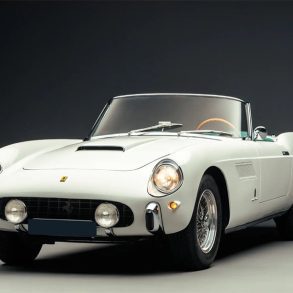
Ferrari 250 GT Cabriolet Series I
The Ferrari 250 GT Cabriolet Series I, introduced in 1957, marked Ferrari's first foray into series production of a convertible. With its elegant Pininfarina design, it was a true expression of 1950s automotive glamour. Featuring a powerful Colombo V12 engine, luxurious appointments, and a handcrafted body, it was a car that epitomized the "Dolce Vita" lifestyle. Limited to just 36 examples, it is a rare and highly sought-after collector's item.

Ferrari 250 GT California Spyder LWB
The Ferrari 250 GT California Spyder LWB (Long Wheelbase), built from 1957 to 1960, was a stunning open-top grand tourer designed for the American market. 1 With its elegant Pininfarina lines and powerful Colombo V12 engine, it embodied the glamour and performance of the era. Hand-built by Scaglietti, the California Spyder LWB was a luxurious and exclusive machine, sought after by celebrities and enthusiasts alike. Its one of the most desirable Ferraris ever created.

Ferrari 250 GT Cabriolet Series II
The Ferrari 250 GT Cabriolet Series II, launched in 1959, was an evolution of Ferrari's elegant open-top grand tourer. With its Pininfarina-designed body, it was a more refined and luxurious version of the original Series I Cabriolet, featuring subtle styling updates and a revised interior. Powered by the legendary Colombo V12 engine, it offered a thrilling driving experience combined with open-air freedom and timeless elegance.

Ferrari 250 GT California SWB
Sharing its drive train with the legendary 250 GT that won the Tour de France, the California Spyder was a car to get excited about. It had the same 140 mph performance and the same competition chassis as the Ferraris lapping the race tracks. Their design was largely based of Pinin Farina's 250 GT Cabriolet Series I but used an upright rear headlight look.
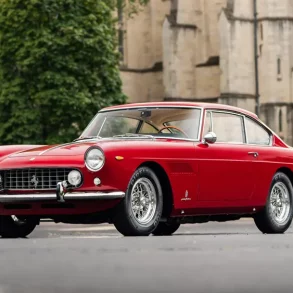
Ferrari 250 GT 2+2 (GT/E)
The 250 GTE was Ferrari’s first four seater and the idea was successful enough to evolve into a series of Ferrari 2+2s that used the same engineering as the sports cars. As these were made for grand touring, the GTE was marketed as a luxurious car. To accommodate two additional seats, Ferrari had to move the engine and auxiliaries 12 inches forward and extend bodywork.
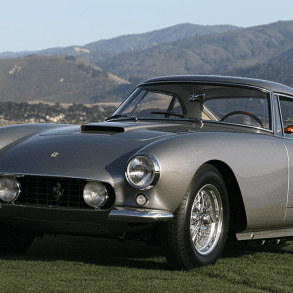
Ferrari 250 GT Berlinetta "Interim"
In 1959, seven 250 GT "Interim" LWB Berlinettas were made. They utilized the old long-wheelbase chassis and had the new Pinin Farina bodywork of the upcoming SWB Berlinettas. The bodies are all-aluminum. Interim vehicles have an additional rear quarter window, absent from the succeeding "Passo Corto" Berlinettas. 'Interim' Berlinetta won 1959 Tour de France Automobile.

Ferrari 250 GT SWB Berlinetta ‘Lusso’
At the 1960 Geneva Motor Show, Ferrari introduced a touring version of their potent SWB race car. Ferrari gave them all odd-numbered chassis numbers which were typically reserved for competition cars. Of the 176 examples built, both steel and aluminum bodies were used in various road ("lusso") and racing trims. Development was handled the same team that later produced the 250 GTO.

Ferrari 250 GT Berlinetta Lusso
Regarded as one of the most beautiful Pininfarina designs, the Lusso, or GT/L, sold as a road-going car and directly benefited from the successful line of Ferrari 250 GTs. It was developed from the dual-purpose 250 GT Short Wheel Base (SWB). When the SWB's time was up, its road-going version was replaced in 1962 with the more curvaceous 250 GT Lusso.
Ferrari 330
The Ferrari 330 series, produced between 1963 and 1968, represents a significant chapter in Ferrari’s history, bridging the gap between the earlier 250 series and the more modern 365 models. With variants like the 330 GT 2+2, 330 GTC, and 330 GTS, this lineup catered to a diverse range of Ferrari enthusiasts, offering everything from refined grand tourers to open-top sports cars. Combining powerful V12 engines, timeless Pininfarina design, and luxurious interiors, the 330 series solidified Ferrari’s reputation for creating cars that were as thrilling to drive as they were beautiful to behold.
Ferrari 330 America (1963 - 1964)
Ferrari 330 GT 2+2 I (1964 - 1965)
Ferrari 330 GT 2+2 II (1966 - 1967)
Ferrari 330 GTC (1966 - 1968)
Ferrari 330 GTS (1966 - 1968)
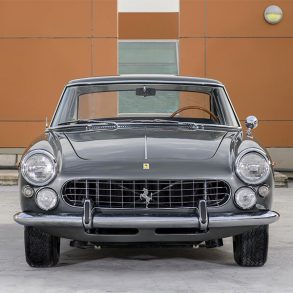
Ferrari 330 America
The final series of Ferrari's four-seat 250 GTE 2+2 were fitted with the 4-liter Columbo V12 engine and renamed 330 America. It had the same gorgeous Pininfarina designed body as the 250 GTE 2+2. The engine was upgraded with new combustion chambers and wider-spaced bores, helping it get to 300 horsepower.

Ferrari 330 GT 2+2 I
Replacing the 250 GTE, the 330 2+2 was Ferrari’s second attempt at a 4-seat grand tourer. The car was often criticized for its distinctive dual headlights which was a feature used by body designer Tom Tjaarda. Not long afterward Ferrari reverted to the single headlight treatment for the model.

Ferrari 330 GT 2+2 II
Reverted from their twin-headlights back to the traditional setup and a larger 4.0-liter engine. The Series II featured a 5-speed gearbox instead of the overdrive four-speed of the prior year. Other changes included switch back to a dual-light, alloy wheels, optional air-con and power steering.
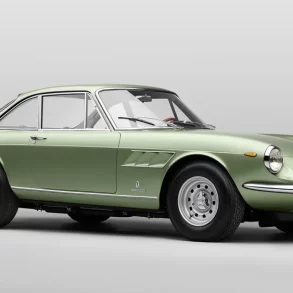
Ferrari 330 GTC
In 1966 Ferrari and Pininfarina released a new coupe at the 1966 Geneva Motor Show on chassis 8329. It was a more luxurious alternative to the 275 GTB/4 and took styling cues from the flagship 500 Superfast which it effectively replaced. It used a modified version of the 275 GTB/4's frame and the Tipo 209/66 V12 engine.

Ferrari 330 GTS
The 330 GTS was released in October at the 1966 Paris Auto Show. It was intended as a grand tourer that delivered quiet performance. The 3967 CC V-12 was a development of the engine used in the 400 Superamerica, and joined to the five-speed gearbox, provided flexible power across a wider range. Only 100 examples were made before the model was upgraded with a 4.4 liter engine in 1968.
Ferrari 275
The Ferrari 275 series, produced between 1964 and 1968, represents one of the most revered chapters in Ferrari’s storied history. As the successor to the iconic 250 series, the 275 brought significant technological advancements while retaining the elegance and passion that define the Ferrari brand. Featuring models like the 275 GTB coupe, 275 GTS convertible, 275 GTB/4 with its advanced four-cam engine, and the ultra-rare 275 GTB/4 NART Spider, this series encapsulates the best of 1960s Italian automotive engineering. In this article, we’ll explore the history, m
Ferrari 275 GTB (1964 - 1966)
Ferrari 275 GTS (1964 - 1966)
Ferrari 275 GTB/4 (1966 - 1968)
Ferrari 275 GTB/4S NART Spider (1967)
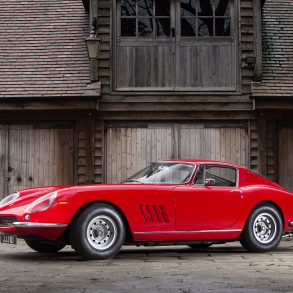
Ferrari 275 GTB
When the Ferrari 275 GTB first appeared in 1964 it wasn’t just his looks that got people talking. This was a Ferrari first, it was the first standard Ferrari road car to come with a five speed gearbox and the first not-born for racing car to place the gearbox between the rear wheels. The 275 GTB had fully independent double wishbone rear suspension.

Ferrari 275 GTS
Built as Ferraris Cabriolet, the 275 GTS replaced the 250 Series II Cabriolet in 1964. New to the car was an updated body by Pininfarina and 3.3-liter engine which it shared with the 275 GTB 'Berlinetta.' Producing a capable 260 bhp, it could power the luxurious cabriolet to around 150 mph. The chassis was thoroughly revised to include four-wheel independent suspension.
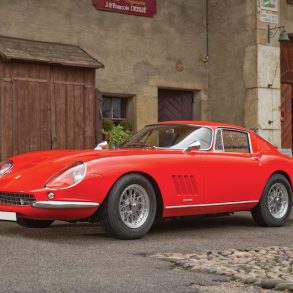
Ferrari 275 GTB/4
At the 1966 Paris Auto Salon Ferrari launched the GTB/4 with the new Tipo 226 engine. It benefited from a variety of upgrades introduced into the series that were tried and tested in the 275 competition models. Upgrades included a long nose bodywork, a torque tube driveline and an engine capable of 300 bhp with a dry sump lubrication system.

Ferrari 275 GTB/4S NART Spider
Only ten Ferrari 275s officially came from the Ferrari factory in spyder configuration (25 were planned). These were all made for Luigi Chinetti who was Ferrari's North American Importer at the time. The 330 GTS was luxurious top-down cruiser while the 275 GTB/4 was a more aggressive Ferrari GT. Americans at the time wanted a convertible offering.
The Dino
Ferrari had mid-engine layouts in their racing cars, but to date all of its road cars were front-engined V12s. The legend goes that Enzo Ferrari was concerned that his buyers did not have the skills to manage a mid-engined sports car. Designers presented Enzo with sketches of a small, sexy mid-engine sports car and Enzo relented and agreed to build the car, but only if it had a less-powerful engine. Enzo chose a V-6 engine design that his son Alfredo (Dino, for short) had helped develop for racing with lead engineer Vittorio Jano. The "Dino" name was a tribute from Enzo to his late son, who had died in 1956 from effects of muscular dystrophy. Widely regarded as one of the best-handling cars of its era, the Ferrari Dino’s mid-engine layout proved a radical leap in road car design when it was released in 1968. Three series of the Dino 246 GT were built, with differences in wheels, windshield wiper coverage, and engine ventilation.
Dino 206 GT (1968 - 1969)
Dino 246 GT (1969 - 1974)
Dino 246 GTS (1972 - 1974)
Dino 308 GT4 (1973 - 1975)
Dino 208 GT4 (1975)
Ferrari 308 GT4 (1976 - 1980)
Ferrari 208 GT4 (1976 - 1980)

Dino 206 GT
Widely regarded as one of the best-handling cars of its era, the Ferrari Dino’s mid-engine layout proved a radical leap in road car design when it was released in 1968. The Dino brand was established to create a more accessible Ferrari, but it turned out to be remarkable in its own right. Light, fun, sexy and great handling, we wish they kept it going.

Dino 246 GT
Just one year after the 206 release, it was replaced with the revised 246 GT. The new 246 was a heavier car, thanks to the inclusion of Fiat's cast-iron V6, which increased the capacity to 2418cc. Compared to the Ferrari V6, the Fiat powerplant had been cast in iron rather than aluminum alloy. Also changed to steel was the bodywork.

Dino 246 GTS
At the 1972 Geneva Motor Show, Ferrari released an open-top version of the Dino 246 called the GTS. Over 1200 examples were produced over a two year period. The 246 GTS had a removable roof panel similar to the 1967 Porsche 911 Targa. Both these cars copied the idea from the Surrey-Top Triumph TR4 which was the first to use such a panel.

Dino 308 GT4
The 308 GT4 was produced from 1973 to April 1980. Initially branded "Dino", the 308 GT4 was Ferrari's first V-8 production automobile. From 1976 onwards the cars were sold as Ferrari badged. In an effort to improve sales until the 1976 official re-badging, Ferrari sent out factory update on July 1, 1975 with technical and cosmetic revisions.
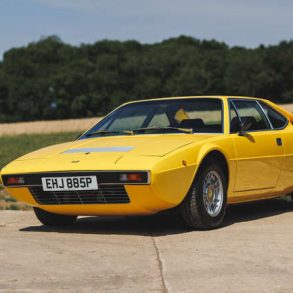
Dino 208 GT4
Introduced at the Geneva Motor Show in 1975, the 208 GT4 was a low-displacement version of the V8 produced for the Italian market, where cars with engines larger than two litres were subjected to more than double VAT (38%). The engine was de-bored to (66.8 by 71 mm) 2.0 L (1990.64 cc) V8, resulting in the smallest production V8 in history for a road car.

Ferrari 308 GT4
Initially branded "Dino", the 308 GT4 was Ferrari's first V-8 production automobile. From 1976 onwards the cars were sold as Ferrari badged. Some of these revisions were implemented piecemeal by dealers. Some made all the revisions while some just made a few. There were two series, differentiated by number of distributors.
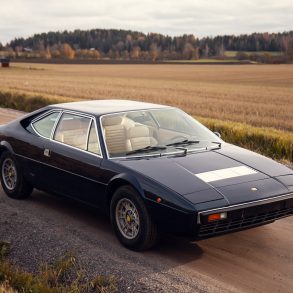
Ferrari 208 GT4
Power output 167 hp at 7700 rpm for a top speed of 137 mph. Smaller Weber 34 DCNF carburetors, a lower final drive ratio and skinnier tires completed the technical changes for the 208. Chrome (rather than black) accents outside and the lack of fog lights were external visual indicators of the smaller-engined GT4.
Ferrari 365
The Ferrari 365 was a family of grand tourers that marked a transition for Ferrari, embracing larger engines and more luxurious appointments. Replacing the outgoing 330 and 500 Superfast models, the 365 utilized a new 4.4-liter V12 engine, an evolution of the Colombo design. This engine was wrapped in a variety of elegant body styles, including the limited-production 365 California Spyder, the sleek 365 GTC and GTS coupes and spiders, and the powerful 365 GTB/4 "Daytona" (not covered in this section). These cars were designed for high-speed touring, offering performance, comfort, and exclusivity.
Ferrari 365 GT 2+2 (1967 - 1971)
Ferrari 365 GTC (1968 - 1970)
Ferrari 365 GTS (1968 - 1970)
Ferrari 365 California (1966 - 1967)

Ferrari 365 GT 2+2
Unveiled at the Paris Motor Show in 1967 this was the first Ferrari 2+2 with independent rear suspension. Koni's coil springs/ shock-absorbers ensured excellent road-holding, and good comfort with self-leveling system in the rear, pioneered jointly by Ferrari and Koni. As with the GTB4 and 330 GTC, transmission involved the 'torque tube' system. The chassis had the same wheel-base as the 330 GT 2+2, but the bodywork was totally new, and more like the Superfasts.

Ferrari 365 GTC
In 1968 Ferrari updated 330 GTC with a 4.4-litre engine and renamed the model to 365 GTC. The larger engine increased low end torque and offered 20 additional horsepower. Only 168 of the interim 365 GTC were produced until the release of the 365 GTB/4 Daytona. They are all easily identified from the 330 GTC by their engine vents at the trailing end of the hood. The fully-independent suspension features unequal A-arms, coil springs, and shocks.
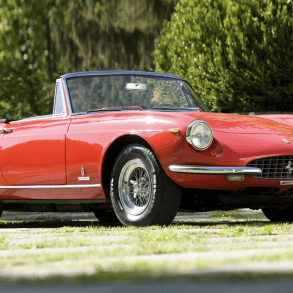
Ferrari 365 GTS
The strong 330 GTC got better. The 4-liter, 300-hp 330 GTC/GTS had plenty of power, but Ferrari wasn’t satisfied with plenty. Ferrari had recently introduced the 365 GT 2+2 as a successor to the 330 2+2. The 365 2+2 was larger than its predecessor, so it was given a new 4.4-liter, 320-hp engine to compensate for the weight. The 365 engine was the same size as the 330 engine, so slipping it in the 330 GTS was easy.

Ferrari 365 California
Shortly after the last 500 Superfast was made, the 365 California was announced as the model's successor. It was the continuation of a series of limited production cars which included the 410 and 400 Superamercas. To keep costs down, but exclusivity high, the 365 California was only offered to select VIP clients of Ferrari. It was basically a reworked 330 GT chassis with Pininfarina body.
Ferrari Daytona
The Ferrari Daytona, officially the 365 GTB/4, was a grand tourer produced from 1968 to 1973. It came in two main forms: the 365 GTB/4 Berlinetta (a sleek coupe) and the 365 GTS/4 Spyder (a rare convertible). Both were powered by a front-mounted 4.4-liter V12, making them formidable performers and icons of 1970s automotive style. There were also competition models, with the official cars built in three batches of five cars each, in 1971, 1972 and 1973.
Ferrari 365 GTB/4 Daytona (1968 - 1973)
Ferrari 365 GTB/4 Daytona Spider (1971 - 1973)
Ferrari 365 GTC/4 (1971 - 1972)

Ferrari 365 GTB/4 Daytona
The last classic-era, front engine, V12 Ferrari was the 365 GTB/4. The press nicknamed it the Daytona much to the disdain of Enzo. Its 170 mph top speed became a supercar benchmark. Under the hood was a 4.4 liter V12. This tremendous speed was emphasized in the first ever Cannonball run when Brock Yates and Dan Gurney piloted their Daytona during the race. Road & Track called it “the best sports car in the world”.
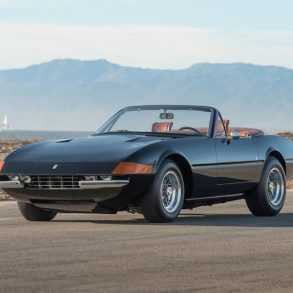
Ferrari 365 GTB/4 Daytona Spider
Ferrari had Pininfarina design the Daytona Spider and limited production to just 122 cars. At the time, the Daytona was known as the top dog. Scaglietti was careful in transforming the 365 into a Spider. It required several modifications that replaced the Coupes fiberglass inner fenders and rear bulkhead with steel counterparts. There is added structural rigidity to help it stay stiff.

Ferrari 365 GTC/4
Ferrari debuted the 365 GTC/4 model at the Geneva Motor Show in March, 1971. It wasn't designed as a replacement for the 365 GT2+2, instead it was Ferrari's practical 2-seat coupe, similar to the previous 330 GTC and 365 GTC models. The 365 referenced the displacement of a single cylinder while the GTC meant it was a Grand Touring (road) car in Coupe (2 door hardtop) configuration and the 4 was camshaft cylinder heads.
Ferrari 365 GT4 2+2, 400 & 412
Front-engined V12 grand tourers produced by Ferrari between 1972 and 1989. Marketed as separate models, they shared a strong family resemblance, utilizing the same basic platform and evolving gradually over time. The 365 GT4 2+2, launched in 1972, introduced the sleek Pininfarina-designed body and spacious 2+2 layout. It was succeeded by the 400 in 1976, notable for being the first Ferrari offered with an automatic transmission. The 400i arrived in 1979 with Bosch fuel injection, improving efficiency and drivability. Finally, the 412, introduced in 1985, boasted a slightly larger engine and subtle styling refinements.
Ferrari 365 GT4 2+2 (1972 - 1976)
Ferrari 400 Auto (1976 - 1979)
Ferrari 400 GT (1952)
Ferrari 400 Auto i (1979 - 1985)
Ferrari 400 GTi (1979 - 1985)
Ferrari 412 (1985 - 1989)

Ferrari 365 GT4 2+2
In 1972, just a year after the launch of the GTC/4, a new 2+2 debuted at the Paris Motor Show: the 365 GT4 2+2. The name refers to the single cylinder displacement (365 cc), four overhead camshafts (GT4) and seat configuration (2+2). Most of the mechanicals, including the 4.4 liter engine, were carried over from its predecessor. The V12 used six side-draft Weber 38 DCOE 59/60 carbs.

Ferrari 400 Auto
At the 1976 Paris Motor Show Ferrari unveiled the replacement for the 365 GT4 2+2. The new 400 was offered in two models: 400 Automatic, using a GM THM400 3-speed automatic transmission, and 400 GT, using a five-speed transmission. The 400 Automatic was the first Ferrari to have an automatic transmission. The 365’s V12 engine had been stroked to a displacement of 4.8 L

Ferrari 400 GT
At the 1976 Paris Motor Show Ferrari unveiled the replacement for the 365 GT4 2+2. The new 400 was offered in two models: 400 Automatic, using a GM THM400 3-speed automatic transmission, and 400 GT, using a five-speed transmission. The 400 Automatic was the first Ferrari to have an automatic transmission. The 365’s V12 engine had been stroked to a displacement of 4.8 L.
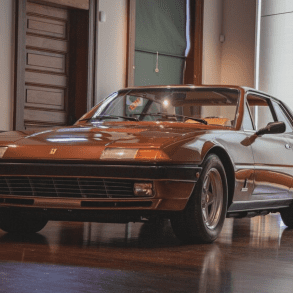
Ferrari 400 Auto i
The carburetors on the 400 were replaced with Bosch K-Jetronic fuel injection in 1979. As in the smaller 308i, power was down to 306 hp, but emissions were improved, complying with U.S. standards. Top speed was 149 mph. Initially differences between the 400 and 400 i were limited to the fuel injected engine. In 1983, the 400i was updated with new camshaft profiles and exhaust headers.
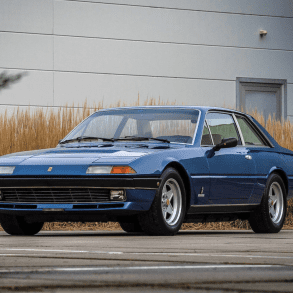
Ferrari 400 GTi
The carburetors on the 400 were replaced with Bosch K-Jetronic fuel injection in 1979. As in the smaller 308i, power was down to 306 hp, but emissions were improved, complying with U.S. standards. Top speed was 149 mph. Initially differences between the 400 and 400 i were limited to the fuel injected engine. In 1983, it was updated with new camshaft profiles and exhaust headers.

Ferrari 412
In 1985 further improvements were made, with the launch of the Ferrari 412. The engine was bored 1 mm. Both the manual and automatic transmissions were retained, but exterior badging no longer denoted the transmission type fitted. Bosch ABS was offered, a first for Ferrari. The body was altered, with a raised rear deck granting more luggage space.
Ferrari Berlinetta Boxer (BB)
Designed by Leonardo Fioravanti of Pininfarina, the Berlinetta Boxer was the first of the Ferrari mid-engine road cars that changed the supercar market. Race cars were already using a mid-engined layout but it was the Lamborghini Miura that made Ferrari accelerate their plans for a mid-engined supercar. The debut of the 365 GT4 BB happened in 1971 at the Turin Motor Show. Gone was the old front-engine 365 GTB Daytona and in was the 365 GT4 BB. The Berlinetta Boxer platform was updated in 1976 with the 512 BB. The 512 BB has refinements to the drivetrain, including dry-sump lubrication, an increased compression ratio of 9:2.1 and larger rear wheels for better handling of the added power. Its new naming convention gave reference to the engine’s 5.0L displacement and the flat 12-cylinder layout. In 1981, further refinements were made for the last series, the 512 BBi, which included Bosch K-Jetronic fuel-injection with more low-end torque.
Ferrari 365 GT4 BB (1973 - 1976)
Ferrari 512 BB (1976 - 1981)
Ferrari 512 BBi (1981 - 1984)
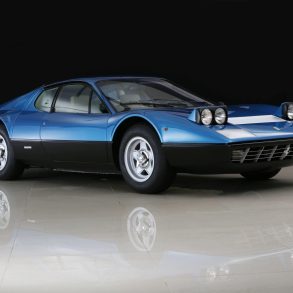
Ferrari 365 GT4 BB
The Boxer Berlinetta marked a big change for Ferrari because the company moved a horizontally opposed engine layout for its new flagship car (thus the Berlinetta Boxer name). The first of Ferrari’s Berlinetta Boxer is the 365 GT4. The car was first shown at the 1971 Turin Motor Show and production began in 1973. Only 387 examples of the 365 GT4 BB were made until it was replaced outright with the 512 in 1976.
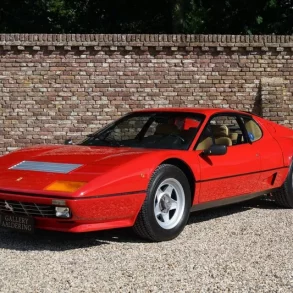
Ferrari 512 BB
In 1976, Ferrari enlarged their flat-12 engine to 4942cc and created the 512 Berlinetta Boxer (BB). This is the car that replaced the 365 GTB / 4 (known as the Daytona) as Ferrari’s flagship car. The rest of the car was improved and in detail the 512 had many new changes. A dry sump lubrication system was also included. Compared to the 365 GT4 BB, the body was wider at the rear for larger tires a revised suspension.
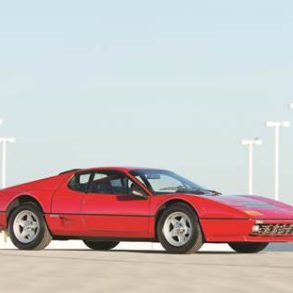
Ferrari 512 BBi
In 1981 Ferrari updated the 512 BB to include Bosch K-Jetronic fuel injection and became known as the 512i BB. The fuel injection was a necessity to pass US emissions regulations. This modernized the car, as it produced less emissions and was thought to be more reliable and driveable once setup correctly. The 512i is a noticeable step up from the 512. The engine was both more efficient and cleaner.
Ferrari 208, 308 & 328
The Ferrari 308 GTB was a mid-engined two seat sports car built by Scaglietti and designed by Pininfarina. It was shown at the 1975 Paris Motor Show and again in London that year as an additional model to the Dino 308 GT4 and as the replacement for the aging 2-seater Dino 246. The 308 replaced the Dino 246 GT and GTS in 1975. This car featured sweeping curves, two seats and a resemblance to the 512B.
Ferrari 308 GTB Vetroresina (1975 - 1977)
Ferrari 308 GTB (1975 - 1980)
Ferrari 308 GTS (1977 - 1980)
Ferrari 208 GTB (1980 - 1981)
Ferrari 208 GTS (1980 - 1981)
Ferrari 308 GTBi (1980 - 1983)
Ferrari 308 GTSi (1980 - 1983)
Ferrari 208 GTB Turbo (1982 - 1985)
Ferrari 208 GTS Turbo (1982 - 1985)
Ferrari 308 GTB QV (1982 - 1985)
Ferrari 308 GTS QV (1982 - 1985)
Ferrari 288 GTO (1984 - 1987)
Ferrari 328 GTB (1986 - 1989)
Ferrari 328 GTS (1986 - 1989)
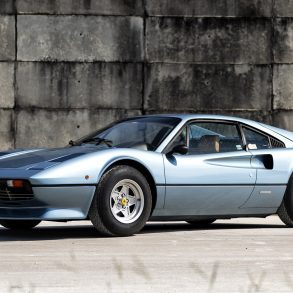
Ferrari 308 GTB Vetroresina
Highlighting the 308 GTB was a fiberglass, or vetroresina, body. Except for the aluminum hood, the entirety of the body was fiberglass and was manufactured by Scaglietti. It was the first time a composite body was sold on a production Ferrari. It allowed the 308 to weigh only 1,100 kg dry. Unfortunately, fiberglass had a downmarket feel (particularly when it came to paint) and put off some customers.
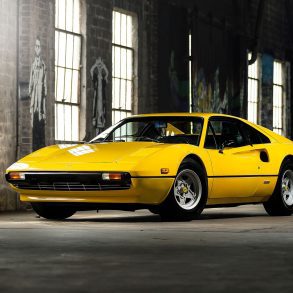
Ferrari 308 GTB
The steel bodied 308 came in 1975. The 308 retained the 308 GT4′s V8 but added dry sump lubrication (in Europe) and was transversely mid-mounted. It was also mounted lower in the chassis. The V8 engine was equipped with four twin-choke Weber 40DCNF carburetors and single coil ignition. European versions produced 252 bhp at 6600 rpm. In the United Stated, power was a lower 237 bhp at 6,600 rpm.

Ferrari 308 GTS
In 1977 Ferrari launched a Targa-top version of their 308 GTB known as this 308 GTS. It was this car which was made famous in Magnum, P.I. starring Tom Selleck. Visually it was very similar to its 308 GTB apart from the black finished solid removable glass-fibre roof panel, and the satin black finished hinged opening louvre panels. The chassis was reinforced to compensate for the lack of a full roof rigidity.

Ferrari 208 GTB
Part of the 208/308/328 range of mid-engined Ferraris, the Ferrari 208 GTB was basically built to take advantage of Italy’s vehicle tax system (engines above 2-liters were subjected to a much higher value added tax). The Ferrari 208 GTB was a 2 liter engine. Aimed at the domestic Italian market. The car was the same Pininfarina 308 design with its wedge profile and egg-crate aluminum radiator grille.
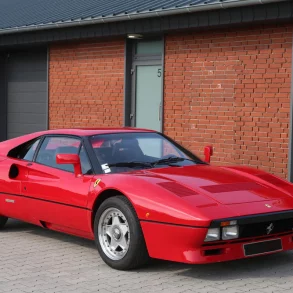
Ferrari 208 GTS
The 208 GTB and 208 GTS used the same V8 engine. The difference was a smaller bore size of 66.8mm (down from 81mm) for a capacity of 1,991cc and produced 153 bhp at 6,800rpm. By the time they were superseded by 208 GTB Turbo and 208 GTS Turbo versions in 1982, a total of only 160 GTB and 140 GTS models had been completed. This is one rare (and very slow) car.
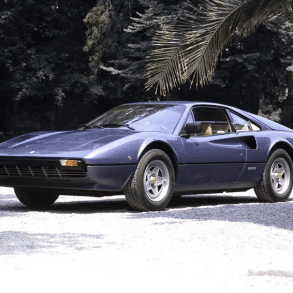
Ferrari 308 GTBi
In 1980 Bosch K-Jetronic mechanical fuel injection was offered, leading to the 308 GTBi and GTSi; emissions decreased, at the price of a power drop to 211 bhp on European models (202 bhp U.S models). The fuel injection was coupled to a Marelli MED 803A Digiplex electronic ignition, incorporating a coil, distributor, and ignition module for each bank of cylinders.

Ferrari 308 GTSi
Outside, the car 308 GTSi and GTBi were identical to the 308 GTB/GTS, save for metric sized wheels of a slightly different design, fitted with Michelin TRX radial tyres—Michelin XWX on 16-inch wheels were optional. Inside, the clock and oil temperature gauge were moved to the centre console. There were also a new black steering wheel with three spokes, and seats of a different pattern.
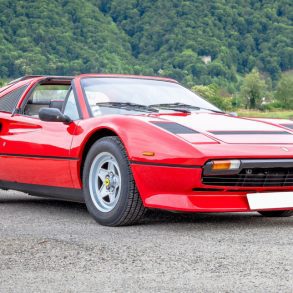
Ferrari 208 GTB Turbo
In 1982 the two-litre 208 was succeeded by a turbocharged and fuel injected version, the 208 GTS Turbo. It was the first ever turbocharged road-going Ferrari. Like the original 208, this model was intended for the Italian domestic market. Both outside and inside the 208 Turbo was almost identical to the contemporary 308 QV.

Ferrari 208 GTS Turbo
In 1982 the two-litre 208 was succeeded by a turbocharged and fuel injected version. A GTS version was introduced a year later, in 1983. Like the original 208, this model was intended for the Italian domestic market. The 208 Turbo was almost identical to the 308 Quattrovalvole and could be recognized by NACA ducts in front of the rear wheel well openings and "turbo" badging.

Ferrari 308 GTB Quattrovalvole
At the 1982 Paris Motor Show, Ferrari launched the 308 quattrovalvole, in GTB and GTS form. The main change from the 308 GTBi/GTSi it succeeded were the four valves per cylinder, increasing power to 240 hp. The new model could be recognized by the addition of a slim louvered panel in the front, a redesigned radiator grille, and rectangular (in place of round) side repeaters.

Ferrari 308 GTS Quattrovalvole
The updated GTS QV and GTB QV models could be recognized by the addition of a slim louvered panel in the front lid to aid radiator exhaust air exit, power operated mirrors carrying a small enamel Ferrari badge, a redesigned radiator grille, and rectangular side repeaters. Apart from the DOHC 32-valve cylinder heads, the V8 was essentially of the same as the 308 GTSi.

Ferrari 288 GTO
Many people have looked upon the F50 project as somewhat of a failure. I can see where they are coming from; the F50 didn't receive a race program and never set any precedents in performance. It is this attitude that is usually held by people how have yet to experience the F50 in person, on track or, better yet, behind the wheel. It was pure race-spec from top to bottom.

Ferrari 328 GTB
We are huge fans of the 1980s GTS. As far as affordable two seat V8 Ferraris go it made our best Ferraris for first time owners list. The 328 was a solid upgrade to the 308. It had better performance, that same gorgeous Pininfarina design, modern comforts and is pretty reasonable to maintain. The 328 was the successor to the Ferrari 308. Small improvements made a big difference.

Ferrari 328 GTS
In the mid-80s, the elegant shape of the open-topped 308 GTS was further softened and rounded to become – once a 270bhp 3.2-liter engine had been fitted amidships – the 328 GTS. The curvier body not only updated the looks, it also improved the aerodynamics. Inside the new drop-top, the now outdated 1970s seats and trim and switchgear were also thoroughly refreshed. More than 6,000 cars were sold, 5x the 328 GTB.

Ferrari GTB Turbo
In 1986 Ferrari launched a two-litre, turbocharged and intercooled variant of the 328, designated simply GTB Turbo and GTS Turbo—replacing the previous 308-based, non-intercooled, Ferrari 208 GTB/GTS Turbo. This version was developed specifically for the domestic Italian market, where cars with a displacement of over 2-litre like the 328 were subject to a 38% value added tax. The turbo was evolved from the 208 Turbo.

Ferrari GTS Turbo
In 1986 Ferrari launched a two-litre, turbocharged and intercooled variant of the 328, designated simply GTB Turbo and GTS Turbo—replacing the previous 308-based, non-intercooled, Ferrari 208 GTB/GTS Turbo. This version was developed specifically for the domestic Italian market, where cars with a displacement of over 2-litre like the 328 were subject to a 38% value added tax. The turbo was evolved from the 208 Turbo.
Ferrari Mondial
Welcome to the bargain Ferrari. Practical, sound great and with loads of room for the kids, the Mondial is the everyday Ferrari. It is the also the car that gets the most shade from Ferrari fans, often called the worst Ferrari ever. The Mondial was designed to combine the features of a sports car with a comfortable GT. It was built alongside the 308-348 ranges as the more practical Ferrari. The Mondial was a practical and usable Ferrari, and while the initial spec was underwhelming, Ferrari did make it progressively lighter and more performance focused with each iteration. The Mondial 8, just like the whole Mondial family, used a mid/rear-mounted V8 engine, featuring Bosch K-Jetronic fuel injection system. It was shared with the 308 GTBi/GTSi and was based on the unit mounted under the hood of the Ferrari Dino. The chassis was also shared with previous models, but was stretched by 3.9 inches.
Ferrari Mondial 8 (1981 - 1982)
Ferrari Mondial Quattrovalvole (1982 - 1985)
Ferrari Mondial Cabriolet (1983 - 1985)
Ferrari 3.2 Mondial (1985 - 1988)
Ferrari 3.2 Mondial Cabriolet (1985 - 1988)
Ferrari Mondial T (1989 - 1993)
Ferrari Mondial T Cabriolet (1989 - 1993)
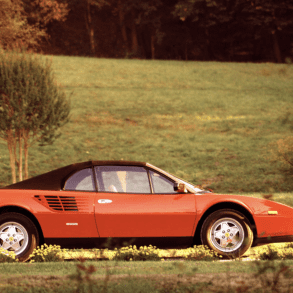
Ferrari Mondial 8
The Mondial 8 was powered by an upgraded version of the small-displacement V-8 Ferrari created in the early 1960. From a performance perspective the Mondial was weak. 0-60 acceleration time was a glacial 9.4 seconds and top speed was a paltry 143 mph. It was the first affordable Ferrari but it just wasn't that exciting.

Ferrari Mondial QV
The first Mondial engine, although a DOHC design, used just two valves per cylinder. The 1982 Quattrovalvole or QV introduced a new four-valve head. Appearance was largely as per the Mondial 8, although with red engine heads and prominent "Quattrovalvole" script at the rear. A worthy update for the Mondial.
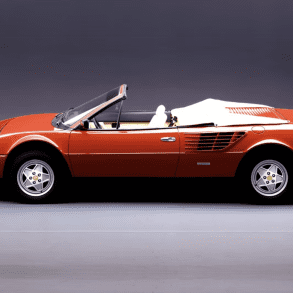
Ferrari Mondial Cabriolet
A new Cabriolet convertible model was added for 1983. The body styling remained the same as the coupé variant, with the roof maintaining the 'buttress' design, though the Cabriolet required the rear seats to be mounted closer together laterally. The intro of the Cabriolet saw popularity rise.

Ferrari 3.2 Mondial
The Mondial 3.2 was first presented at the 1985 Frankfurt Auto Show. Like the new Ferrari 328, the Mondial's engine grew in both bore and stroke to 3.2 L, with power now up to 270 bhp. Performance improved slightly, but it was still underwhelming. Styling was refreshed and the 3.2 also boasted a big interior update.
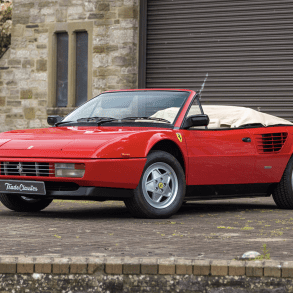
Ferrari 3.2 Mondial Cabriolet
The Mondial 3.2 was first presented at the 1985 Frankfurt Auto Show. It was available as both a coupe and convertible, performance improved slightly, but it was still underwhelming. Styling refreshed with restyled and body-coloured bumpers, similar to the 328 with more integrated indicators and driving lamps, and new alloy wheels with a more rounded face.
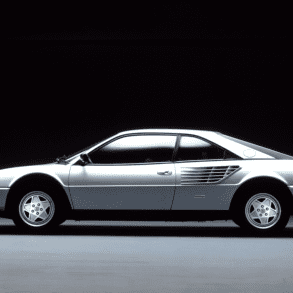
Ferrari Mondial T
The final Mondial evolution was 1989's Mondial T. It was a substantially updated. The 't' called attention to the car's new engine/transmission layout: the previously transverse engine mounted longitudinally while the gearbox remained transverse, thus forming a 't'. By adopting this layout, a longer engine could be mounted lower in the chassis, improving handling.

Ferrari Mondial T Cabriolet
The final Mondial evolution was 1989's Mondial T. It was a substantially updated. The 't' called attention to the car's new engine/transmission layout: the previously transverse engine mounted longitudinally while the gearbox remained transverse, thus forming a 't'. By adopting this layout, a longer engine could be mounted lower in the chassis.
Ferrari Testarossa
Made famous for its role in Miami Vice and Sega’s Out Run, the Testarossa was Ferraris leading supercar in the mid-eighties. Its distinctive side strakes and ultra-wide rear track inspired many other supercar designs and they became a symbol of 1980’s retrograde culture. After a long production run of over 7000 cars, Ferrari updated their Testarossa design into the 512 TR. The 512M was launched in October 1994 at the Paris Salon as the ultimate and final Testarossa. It was also the last of the ageing flat-12 Ferraris which first came on the scene in 1973 with the 365 GT4 BB.
Ferrari Testarossa (1984 - 1991)
Ferrari 512 TR (1991 - 1994)
Ferrari F512 M (1994 - 1996)

Ferrari Testarossa
Compared to the 512i BB it effectively replaced, the Testarossa was a larger car that accommodated mid-mounted radiators. This helped reduce cockpit heat and also had the effect of making the car much wider at the rear. It also provided more space in the front trunk. The Testarossa was powered by a 4.9-liter version of Ferrari’s Boxer-12 which was effectively a 180º V12. Producing 390 bhp, 0–60 miles per hour was typically clocked at 5.2 seconds.

Ferrari 512 TR
The 512 TR body was slightly updated by Pininfarina, while much work was done by Ferrari under the hood to gain roughly 40 more bhp. The 512 TR's engine was extensively reworked. Nikasil liners were added, along with a new air intake system, Bosch engine management system, larger intake valves, and a revised exhaust system. In addition to the higher peak power, the modifications delivered a more broad power band for better acceleration.
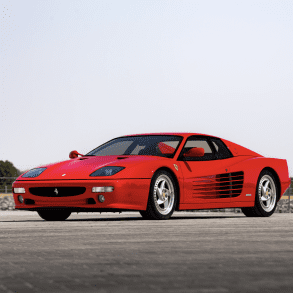
Ferrari F512 M
The result of constant evolution, the 512M shared almost all of its engineering from the 512 TR that came before it. Most of the changes were limited to slight body upgrades that many consider ruin the lines of the original design. At the front a new F355-style front bumper was used with fixed headlights. At the rear, the matt black grille from the TR was reduced and limited to space between the rear lights. Of course the signature side strakes were retained for street creds.
Ferrari 348
Introduced in 1989, the 348 was a major departure for Ferrari’s successful road-going, mid-engine series of sports cars and it replaced two of the most popular Ferrari models in history, the 308 and the 328. The 348, badged 348 tb for the coupé (Transversale Berlinetta) and 348 ts for the targa (Transversale Spider), featured a naturally aspirated 3.4-litre version of the quad-cam, four-valve-per-cylinder V8 engine. The 348 was fitted with dual-computer engine management using twin Bosch Motronic ECUs, double-redundant anti-lock brakes, and self-diagnosing air conditioning and heating systems. Late versions (1993 and beyond) have Japanese starter motors and newer power generators to improve reliability, as well as the battery located in the front fender for better weight distribution.
Ferrari 348 TB (1989 - 1993)
Ferrari 348 TS (1989 - 1993)
Ferrari 348 GTB (1993 - 1995)
Ferrari 348 GTS (1993 - 1995)
Ferrari 348 Spider (1993 - 1995)
Ferrari 348 Serie Speciale (1992 - 1993)
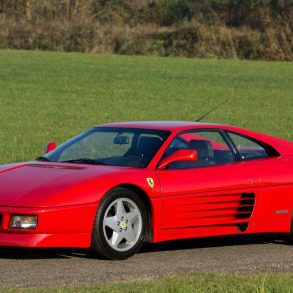
Ferrari 348 TB
Auto journalists described the 348 as, "something quite special," and the engine being the formative element in defining the car's character, rising in an, "operatic crescendo," having the, "power to raise goose bumps". Some areas of critique focused around the long-established topic of Ferrari gearboxes, typically stiff and balky when cold. The 348 did not break from tradition in this area.
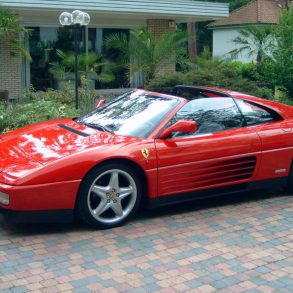
Ferrari 348 TS
Auto journalists described the 348 as, "something quite special," and the engine being the formative element in defining the car's character, rising in an, "operatic crescendo," having the, "power to raise goose bumps". Some areas of critique focused around the long-established topic of Ferrari gearboxes, typically stiff and balky when cold. The 348 ts stood for the targa (Transversale Spider) body.

Ferrari 348 GTB
Modified from the 348 TB, the 348 GTB was a two-seater berlinetta with dynamic performance characteristics worthy of the marque's highest traditions. Its sports orientation was best expressed on the track, as proven by the 348 Challenge, which saw this car race on circuits in Europe and the US. Updated starter motors and Nippondenso power generators to improve reliability.

Ferrari 348 GTS
This two-seater convertible offered the same specifications as the 348 GTB, with the choice of open or closed-top motoring and a layout that had by now become a Ferrari classic: as on the outgoing TS, the hard top was stowed away in the space behind the seats. The revised cars were presented to the public as the 348 GT versions, equipped with the F119H engine (as opposed to the original F119D or F119G).

Ferrari 348 Spider
In 1993, Ferrari tweaked the 348 lineup, adding the power and handling upgrades from the Serie Speciale to the TS and TB, renaming both to the GTS (targa) and GTB (coupe). For the first time in the history of Ferrari mid-engine V-8 two-seaters, the 348 incorporated a full drop-top variant called the 348 Spider, replacing the mid-engine 2 + 2 Ferrari Mondial cabriolet.
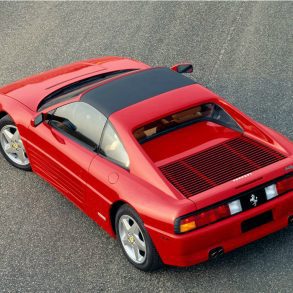
Ferrari 348 Serie Speciale
Between 1992 and 1993 Ferrari made 100 limited edition units of 348 Serie Speciale specifically for the US market. The main technical modifications consisted in a revised engine, a free flow exhaust system, a shorter ratio final drive and Pirelli P Zero tyres. Ferrari indicated a 0-60 mph time of 5.3 seconds and a standing quarter mile of 13.75 seconds.
Ferrari F355
Built as Ferrari’s entry level supercar, the F355 followed the 308, 328 and 348 as a cheaper alternative to their V12 models. Ferrari President Luca di Montezemolo encouraged the design, engineering and marketing teams at Ferrari to create something entirely new, exciting and completely different from the 348. In 1994 Ferrari did it and replaced the 348 series with the F355. The car was once again designed by Pininfarina and had a similar layout and proportions to the 348, but was much more beautiful. The F355’s 40-valve V-8 had 375 horsepower and 268 pound-feet of torque. The V8 revs to satisfying 8,250rpm and sounds guttural, rough and very Ferrari-like. 0-62mph in 4.7 seconds and a top speed of 183mph were both very fast for the day. For most, the scream of that wild V8, the click-clack of the truly satisfying metal gate manual gearbox and the looks are what makes this Ferrari special.
Ferrari F355 Berlinetta (1994 - 1999)
Ferrari F355 GTS (1995 - 1999)
Ferrari F355 Spider (1996 - 1999)
Ferrari F355 F1 Berlinetta (1997 - 1999)
Ferrari F355 F1 GTS (1997 - 1999)
Ferrari F355 F1 Spider (1997 - 1999)
Ferrari F355 Limited Edition (1997 - 1999)
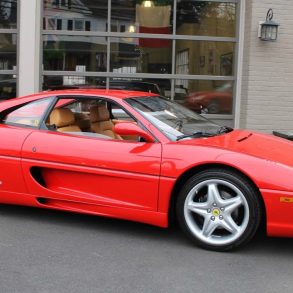
Ferrari F355
The F355 was a major hit: its full body undertray was highlighted as a performance benchmark upon release and orders piled in faster than Ferrari could fill them. Press reviews were favorable and generally appreciated the 25% percent increase in horsepower, as well as Pininfarina’s gracious styling.

Ferrari F355 GTS
In 1995, Ferrari introduced the GTS model to the F355 family. The GTS model was based on the F355 Berlinetta but offered a removable "targa-style" roof. Other specifications were identical to the Berlinetta. 2,577 GTS models were produced, with 2,048 6-speed manuals.
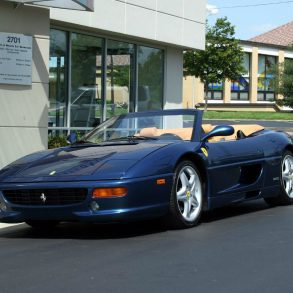
Ferrari F355 Spider
In 1994 Ferrari offered a convertible version of their 355 known as the Spider. It was developed exclusively by Pininfarina to have a semi-automatic soft top. It was powered electronically (a first for Ferrari at the time). They tested it 1800 hours in a wind tunnel.
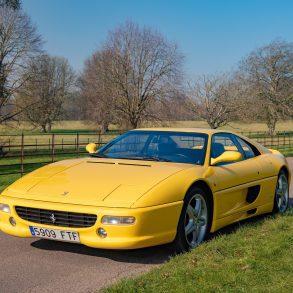
Ferrari F355 F1
In 1997, a new electro-hydraulic gearbox became available known as the F1 transmission. This was the first ever road car to be equipped with the innovative F1-style gearbox management system. The system was operated by paddles behind the steering wheel using the F355’s 6-speed manual.

Ferrari F355 F1 GTS
Like all the 355 series, the 355 F1 GTS is powered by a 3.5-liter V8 featuring titanium rods, five-valve cylinder heads, and a 180-degree crankshaft. The engine delivered a total of 375 hp at 8,250 rpm. Performance was 0–60 mph in 4.7 seconds, the quarter mile in the low 13-second range, and top speed went to an impressive 183 mph. In 1997, it got the F1 tranny.

Ferrari F355 F1 Spider
In 1997, a new electro-hydraulic gearbox became available known as the F1 transmission and was available in the Spider. This is the car that many people look for these days, being a later model year and convertible. The F1 tranny is, at best, clunky, the leather dash will shrink from sitting in the sun, and the 355s all have, the dreaded sticky switches.
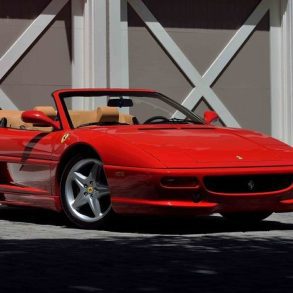
Ferrari F355 Edition Fiorano
For the 1999 model year, Ferrari introduced a limited production of F355 Spider models designated, "Serie Fiorano". Launched in March 1999, this limited production run of 100 planned units (104 actually produced) included a number of enhancements increasing the track performance much closer to the Challenge versions.
Ferrari 456
The Pininfarina-designed Ferrari 456 GT debuted in Europe in 1993 and was first available in the U.S. in 1995, and can be viewed as a replacement for the 365 GT 2+2 / 400 / 412 series. It was the marque’s first car designed with the 21st century in mind and was appreciated by Maranello’s clients for the way it provided saloon-class comfort and roominess combined with class-leading performance. A true four-seater coupé, the 456 GT was also the first modern Ferrari to revert to a front engine, rear-wheel drive layout, with the gearbox in unit with the rear differential for ideal weight distribution as well as plenty of space for passengers and luggage. This front-engined 2+2 grand tourer had a 436 hp, 5.5-liter V-12 mated to a six-speed gearbox that propelled it from 0-60 in just over 5 seconds on its way to a top speed of 186 mph. The 456M, in its GT and automatic gearbox GTA guises, is the evolution of Ferrari’s successful interpretation of its 2+2 models.
Ferrari 456 GT (1992 - 1997)
Ferrari 456 GTA (1996 - 1997)
Ferrari 456M GT (1998 - 2003)
Ferrari 456M GTA (1998 - 2003)
Ferrari 456M GT Scaglietti (2002 - 2003)
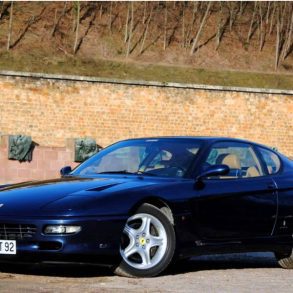
Ferrari 456 GT
The 456GT has a 5.5-litre front-mounted V12 producing 436bhp, driving the rear wheels through a six-speed manual gearbox and a dog-leg gate (was changed to H pattern in 1995). All of this performance could be managed from a cockpit that provided Connolly leather appointments for four and every other comfort expected of a $245,000 automobile, including a cockpit-adjustable suspension.
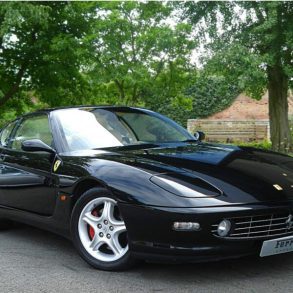
Ferrari 456 GTA
This front-engined 2+2 grand tourer had a 436 hp, 5.5-liter V-12 mated to a six-speed gearbox that propelled it from 0-60 in just over 5 seconds on its way to a top speed of 186 mph. Shortly after Ferrari introduced the 456 GT, the 456 GTA became available, the “A” signifying a four-speed automatic gearbox. It was a good option for a GT and sold decently well, but still about a third of the number of the manual.

Ferrari 456M GT
The 456M (M standing for Modificata) was unveiled in 1998, starting with chassis number 109589. Many changes were made to improve aerodynamics and cooling and the interior was refreshed with new seats and other conveniences (fewer gauges on the dash, and a new Becker stereo fitted in front of the shifter. The 456 had a smaller grille with fog lights outside the grille and other design tweaks.

Ferrari 456M GTA
The 456M (M standing for Modificata) was unveiled in 1998, starting with chassis number 109589. Many changes were made to improve aerodynamics and cooling and the interior was refreshed with new seats and other conveniences (fewer gauges on the dash, and a new Becker stereo fitted in front of the shifter. The 456 had a smaller grille with fog lights outside the grille and other design tweaks.
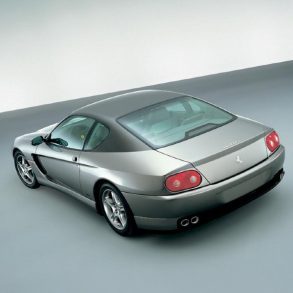
Ferrari 456M GT Scaglietti
In the final year of production, customers could specify their vehicle using the Carrozzeria Scaglietti Program. Ferrari introduced this special two-tone version as a further example of the personalization opportunities offered by the personalization programme, adopted by 90% of Ferrari’s clientele. In the case of the 456M GT displayed on the Ferrari stand, and expressly designed for Michael Schumacher.
Ferrari 550, 575 & 612
With its front engine/rear wheel drive platform, the 550 brought back a classic drivetrain layout not used since the Ferrari 365 GTB/4 Daytona production ceased in 1973. The car was designed for Grand Touring with a higher degree of comfort than the F355 and F50 which were produced concurrently. Named is honor of Ferrari's Headquarters in Maranello the 550 was first introduced in 1996. The car used technology from the 456 2+2 but featured an entirely new 5.5-liter V12 that could produce nearly 500 bhp. Serving as a successor to the radical 550 Maranello, the 575M was got the M suffix which stands for modificato (modified in italian) which stresses how many areas on the car have be rethought. While many of the original styling characteristics have been retained, Ferrari have substantially re-engineered the engine, transmission and driveline for the new car. The engine , with a numerical code of 575, is an enlarged version of the V12 found in the original 550. And yes, we know the 612 Scaglietti doesn't really belong in this section. It didn't really belong anywhere to be honest. The 612 Scaglietti was released at the 2004 NAIAS as Ferrari's first all-aluminum 4-seat grand tourer. It had a six year life and was essentially the replacement for the 456.
Ferrari 550 Maranello (1996 - 2002)
Ferrari 550 Barchetta Pininfarina (2001)
Ferrari 575M Maranello (2002 - 2006)
Ferrari Superamerica (2005)
Ferrari 612 Scaglietti (2004 - 2010)
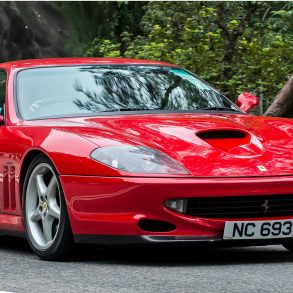
Ferrari 550 Maranello
The steel chassis is a modified version of the one in the F456 and supports an aluminum alloy body. In 2002 the 550 was replaced by the 575M Maranello, which was an all-around improved version (modificata in Ferrari parlance) of the car, rather than an all-new construction.In total 3,083 units of the 550 Maranello were produced.
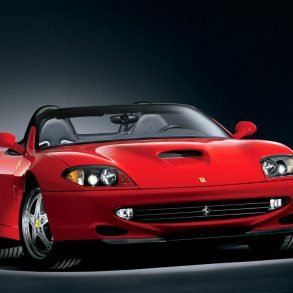
Ferrari 550 Barchetta
Unveiled at the Paris Show in 2000, the 550 Barchetta Pininfarina was so named to commemorate the 70th anniversary of Ferrari’s coachbuilder and stylist. A strictly limited edition of just 448 numbered cars was built, with the last leaving the factory in December 2001. Each car was numbered, displayed on a special in-car plaque.

Ferrari 575M Maranello
The 575M V12 retained much of the same design elements as before with 4 valves per cylinder, twin overhead camshafts in an all aluminum design. As an option, the 575M offered an F1-style gear change, the first time a road-going car has implemented this technology on a V12 platform. Overall, a better all-round package than the 550.

Ferrari Superamerica
The Superamerica featured an electrochromic glass panel roof which rotated 180° at the rear to lie flat over the boot. The Superamerica used the higher-output tune of the V12 engine used on the 575M and Ferrari marketed it as the world's fastest convertible car. The GTC handling package was optional.

Ferrari 612 Scaglietti
Unlike the 456M it effectively replaced, the 612 had adequate room in the rear for two adults. The 612 shared the same basic engine architecture as the Ferrari 575M Maranello with its Tipo F133F V12 engine that could produce 532.6 bhp @ 7250 from a displacement of 5,748 cc. It was mated to either a 6-Speed manual or F1 semi-automatic.
Ferrari 360
The Ferrari 360 was a modern Ferrari in every sense. When it debuted in 1999, it was the first Ferrari to have an aluminum chassis. It also had multi-mode traction control, as well as a fully-independent electronically-adjustable suspension. It had an epic naturally aspirated V8 that revved to 8,700 rpm and was good for a 0 - 60 mph sprint in just 4.3 seconds. It was also the last Ferrari to come with a 6-speed manual gearbox. The 360 was produced from 1999-2005. In 2000, Ferrari introduced the convertible, aka the 360 Spyder. Then, in 2003, the 360 Challenge Stradale debuted.
Ferrari 360 Modena (1999 - 2005)
Ferrari 360 Spider (2001 - 2005)
Ferrari Challenge Stradale (2003 - 2004)

Ferrari 360 Modena
As Ferrari’s entry level product, the 360 offered many technologies which made it a superior car to the F355 series it replaced. Highlighting the car was an all aluminum chassis which included many complex castings versus the aluminum sheet and tube chassis coming from England. The result was the 360's chassis was about 25 percent lighter than the F355’s.
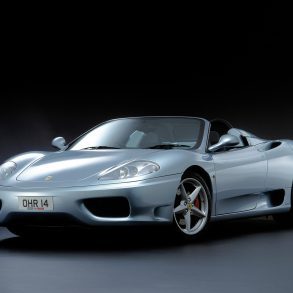
Ferrari 360 Spider
The 360 was designed with a Spider variant in mind; since removing the roof of a coupe reduces the torsional rigidity, the 360 was built for strength in other areas. Ferrari designers strengthened the sills, stiffened the front of the floorpan and redesigned the windscreen frame. The rear bulkhead had to be stiffened to cut out engine noise from the cabin. Passenger safety included strengthened windscreen frame and roll bars.

Ferrari Challenge Stradale
Compared with a regular 360 Modena, weight was reduced significantly and the engine was tweaked. Its bare-bones approach and subtle styling changes only hint at the thoroughbred under the skin: this is a road-legal car that is entirely race-ready. It offered genuine race car performance and features in an accessible, street-legal package that is built on top of a production model. Today, it is on our our short list.
Ferrari F430
The F430 signaled the arrival of a brand new generation of Ferrari 8-cylinder models. The biggest changes appeared in the engine bay, where the F430 sported an all-new, 4.3-liter V8 that pumped out 483 horsepower and 299 lb-ft of torque—90 hp and 68 lb-ft more than the regular 360. Also boosting the F430’s performance was a new, Formula 1-derived electronic differential and the now-ubiquitous steering wheel-mounted manettino. This rotary switch allowed the driver to select various dynamic modes, such as Wet, Sport and Race, which deliver specific combinations of shock-absorber stiffness, traction-control intervention, gearshift speeds (on F1 transmission-equipped cars) and so on. The first model, the Berlinetta came first, and the following year, a convertible version debuted. The only differences between Berlinetta and Spider were the latter’s power rag top, exposed roll-over bars and rear deck, which featured a glass window through which the engine was visible. In 2007, Ferrari released a more sporting variant of the Berlinetta called the 430 Scuderia. This model had a stripped interior, a stronger engine, stiffer suspension and stickier tires, larger carbon-ceramic brakes, more downforce, and less weight.
Ferrari F430 (2005 - 2009)
Ferrari F430 Spider (2006 - 2009)
Ferrari 430 Scuderia (2007 - 2010)
Ferrari Scuderia Spider 16M (2009 - 2010)
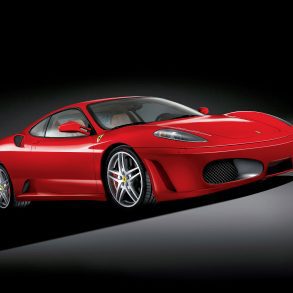
Ferrari F430
Officially presented during the Paris Motor show in September 2004, the F430 signaled the arrival of a brand new generation of Ferrari 8-cylinder models. The F430 took Ferrari's achievements with aluminium technology to the next level, and offered a series of significant innovations. These innovations are world firsts for production cars: the electronic differential (E-Diff) and the steering wheel-mounted manettino, which manages the integrated systems governing vehicle dynamics.

Ferrari F430 Spider
Ferrari's F430 drop-top included a number of important technical features which gave hints of the car's F1 pedigree, starting with the innovative electronic differential - first developed by the racing division for the Scuderia's all-conquering F1 cars - which improves traction and roadholding under all conditions. The Spider also featured the steering wheel-mounted commutator switch, the 'manettino', which allows the car's set-up to be adjusted easily and quickly.
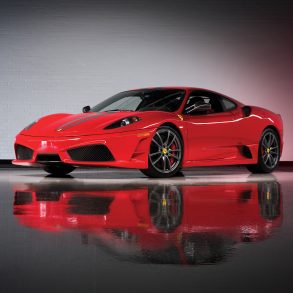
Ferrari 430 Scuderia
The extreme version of that already awesome F430 and one of our favorite cars ever was the F430 Scuderia. The Scuderia demonstrated how Ferrari’s Formula 1 know-how carried across to its production cars. Fitted with a naturally-aspirated 4308cc V8’s it is one of the best engines ever. Light, largely composite bodywork, aero tuned for extra downforce in corners, a stripped out interior and fettled engine and electronics. A 220 pound weight loss program.

Ferrari Scuderia Spider 16M
The limited edition (only 499 we built) Scuderia Spider 16M was built to celebrate Ferrari’s 16 Formula One constructors’ championships and it is based on the Ferrari Scuderia coupe. The basics are the same as the Scuderia with the 16M getting the higher compression 4.3 liter V8 that is good for an extra 20bhp and 4 lb/ft torque over the base Spider. Bodykit, aero, suspension, interior and electronics are all fettled like the Scuderia coupe too. Intensifies the experience.
Ferrari 599
The 599 replaced the 575 in the summer of 2006 and brought the front-engined V12 Ferrari slap bang into the modern age. All-aluminium chassis, lashings of glossy carbonfibre, F1 SuperFast gearbox, F1-Trac stability and traction control, magnetic semi-active dampers and carbon-ceramic brakes, all wrapped in aggressive, aero-optimised bodywork with minimal overhangs and maximum presence.
Ferrari 599 GTB Fiorano (2006 - 2012)
Ferrari 599 GTO (2010 - 2012)
Ferrari SA APERTA (2010)

Ferrari 599 GTB
The engine was a lightly modified version of the Enzo’s 6-litre V12 with a mighty 611bhp at 7600rpm, endowing Ferrari’s new series-production flagship with truly sensational performance: 0-60 in 3.5sec, 0-100 in 7.4 and 205mph. In 2010, Ferrari release the 599 HGTE. The Ferrari 599 GTB Fiorano HGTE (HGTE being an abbreviation of Handling Gran Turismo Evoluzione) is an upgrade package for the 599 to improve the car's handling.

Ferrari 599 GTO
The Ferrari 599 GTO is an extreme V12 berlinetta developed to a specific performance-oriented brief. The Ferrari 599 GTO was, in fact, the company's fastest ever road car. It was an exclusive limited edition special which, in true Ferrari tradition, is a completely new concept, albeit inspired by a production car. In fact the Ferrari 599 GTO is based on the 599XX, the advanced experitmental customer race cars.
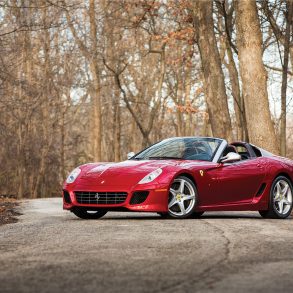
Ferrari SA APERTA
The roadster variant of the 599, the SA Aperta, was introduced at the 2010 Paris Motor Show as a limited edition in honour of designers Sergio Pininfarina and Andrea Pininfarina, with the "SA" designation standing for both their names. It utilized the higher performance engine and gearbox from the 599 GTO and has a lower ride height, thicker rear anti roll bar and recalibrated magnetic dampers. It is rare too, limited to 80 units.
Ferrari California
The Ferrari California represented a radical new design that incorporated a number of new concepts showcased for the first time in a production model. While many dismissed the California as a "soft" Ferrari, it was the first front-mounted V8 in a Ferrari, the first Ferrari with a 7-speed dual-clutch transmission, the first Ferrari hard-top convertible featuring a folding metal roof and the first Ferrari to feature a multi-link rear suspension and direct fuel injection engine. Initially, the 4.3L V8 engine produced 453 hp and 358 lb-ft of torque, and it had excellent handling is due in large part to its weight distribution: the front-mounted engine allowed for a 47% front / 53% rear distribution of weight. The Ferrari California T arrived on February 12, 2014 , the “T” representative of the twin-turbocharged engine delivering upwards of 553 hp and 557 lb-ft of torque. The powertrain is simply one upgrade to the California.
Ferrari California (2009 - 2012)
Ferrari California 30 (2012 - 2014)
Ferrari California T (2014 - 2017)

Ferrari California
The new Ferrari California was designed to bring new buyers into the Ferrari fold. While it wasn't a 458 in terms of vehicle dynamics and driving pleasure, it was a pretty awesome daily driver. It was exclusively a convertible with a folding hard top. Both chassis and bodywork were aluminium, in line with the rest of the range at the time. The California is powered by a new V8 engine mounted for the first time in company history in the mid-front position.
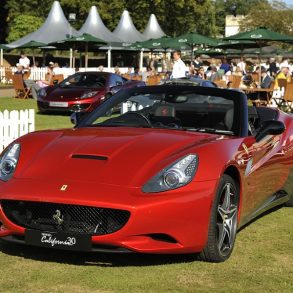
Ferrari California 30
On 15 February 2012, Ferrari announced the California 30, an update that was lighter and more powerful. While the Pininfarina design remained, the changes included reducing body weight by 66 lb; increased power output by 30 hp and 15 11 lb/ft of torque; acceleration time from 0–62 mph reduced to 3.8 seconds; introduction of Handling Speciale (HS) package and elimination of the manual transmission option. Published top speed was 194 mph.

Ferrari California T
The Ferrari California T was an updated design of the California model featuring new sheetmetal and revised body features; a new interior, a revised chassis and a new turbocharged powertrain. It debuted in 2014 for the 2015 model year and came with a twin-turbo V8. Similarly to the previous generation, a Handling Speciale (HS) package was made available for the California T, providing sportier handling at the expense of a stiffer ride.
Ferrari 458
Continuing the stepwise evolution of Ferrari’s mid-engine supercar, the 458 introduces several key features into the model range including a 570 bhp direct injection engine and a dual-clutch 7-speed transmission. Furthermore, the shape of the car has been heavily reworked by Pininfarina including an elegant new interior. Many of the new elements of the 458’s body are dictated by aerodynamics. This is particularly true of the front grill which has aeroelastic winglets that bend at speed to increase airflow under the car. This eventually reaches the rear diffuser which can produce 794 lbs of downforce at top speed split 41/59% over the wheels. Air apertures in the C-pillar direct air towards the engine and vents above the rear diffuser help the twin transmission radiators cool. The final element is a small intake and exit that are located around the front headlights to reduce drag.
Ferrari 458 Italia (2009 - 2015)
Ferrari 458 Spider (2011 - 2015)
Ferrari 458 Speciale (2013 - 2015)
Ferrari 458 Speciale A (2014 - 2015)
Ferrari 458 Italia China Edition (2012)

Ferrari 458 Italia
Whether it be its sleek and timeless Pininfarina design, or its epic 562 hp naturally-aspirated V8 engine with a 9,000 rpm redline; the 458 was destined for greatness the moment the first car drove off the production line. It has already become a modern classic. The 458 boasted a completely redesigned platform and brand new Pininfarina design. Its name is derived from its showcase 4.5L 8-cylinder engine, which made it “the highest-revving street-legal production V8”.

Ferrari 458 Spider
The 458 Spider is powered by Ferrari’s naturally-aspirated, direct-injection 4.5 litre V8 which was nominated as the 2011 International Engine of the Year for its engineering excellence in terms of drivability, performance, economy and refinement. Power is transferred to the road by Ferrari’s class-leading dual-clutch F1 paddle-shift transmission through the E-Diff, itself integrated with the F1-Trac traction control. The top is an electronically retractable hardtop.

Ferrari 458 Speciale
This is absolutely our favorite car ever. Period, full stop, the end. It took the already epic “entry level” 458 and with the Speciale, Ferrari amped everything up to 11. It is arguably the best naturally aspirated sports car in history. It was the last naturally-aspirated V8 Ferrari and the engine was at its peak in terms of evolution. Mid-engined 4.5-litre V8 with flat-plane-crank, sky high 9,000 RPM redline, insane 597 bhp and 398 lb/ft of torque, making this the most powerful naturally aspirated V8 ever built.
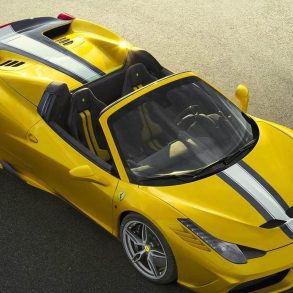
Ferrari 458 Speciale A
The Speciale A followed the 16M’s exclusivity formula with just 499 units made. Unlike the 16M which had a fabric roof, Ferrari decided the Speciale A should have the same folding hard-top as the regular 458 Spider. At 1445kg the numbers were worrying for hard core fans. To offset its weight, Ferrari added the same powerplant as the Speciale. As a result, the Speciale A had the most powerful naturally-aspirated road-going V8 engine ever built by Ferrari. Rare and special.

Ferrari 458 Italia China Edition
This special edition marked the 20th anniversary for Ferrari in China since the first Ferrari, a 348 TS, was ordered in Beijing. This 458 Italia special edition of only 20 cars was dedicated exclusively to the China market. The car’s livery is characterized by unique Chinese elements and is finished in a brand new colour called Marco Polo Red specially developed for this exclusive car.
Ferrari FF & Ferrari GTC4Lusso
Replacing the 612 as Ferrari's newest 2+2 was the Ferrari Four or simply FF. More than any other production Ferrari it breaks with the companies past by featuring a 4WD drivetrain that makes use of a twin-clutch transmission and a 6262cc version of Ferrari's 65º V12. It had relative success, being a truly practical car for four adults. In 2016, it was replaced by the GTC4Lusso, an update that kept the FF's promise of the ability to blend top-of-the-line technology and luxury, with a truly sporty package – something consumers had been begging for from the manufacturer for decades. Following on from the success of GTC4Lusso, which raised the performance bar for Ferrari’s traditional four-seater V12 GTs, the Prancing Horse announces the arrival of the new GTC4Lusso T, the first four-seater to be powered by a V8 engine. Ushering in a whole new Ferrari Grand Touring concept, the car is aimed at drivers seeking a car that is sporty and versatile, as well as perfect for driving on a daily basis.
Ferrari FF (2011 - 2016)
Ferrari GTC4Lusso (2016 - 2020)
Ferrari GTC4Lusso T (2017 - 2020)
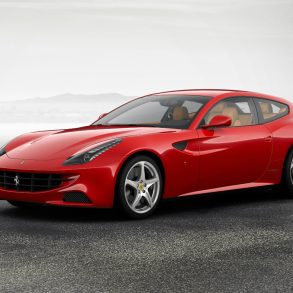
Ferrari FF
The engine produced 650 bhp which eclipses any other car in the same class such as the Aston Martin Rapide or Porsche Panamera. As such it can reach 0-100 kph in only 3.7 seconds. Furthermore the use of direct injection reduces emissions while raising the power. The body was shaped entirely by Pininfarina as a low-slung fastback. This was easily the most practical Ferrari ever made, with room for four adults and all-wheel-drive.

Ferrari GTC4Lusso
The GTC4 Lusso was essentially an update to the FF. Complete with Ferrari's signature V 12 engine, it combined luxury and performance, with all weather safety and stability. The cockpit was less like the Quattroporte and more Tesla Model S with a large, central touch screen console. The chassis is also specced out with the company’s top of the range systems, including its new rear wheel steering system as well as the anti-skid control system.
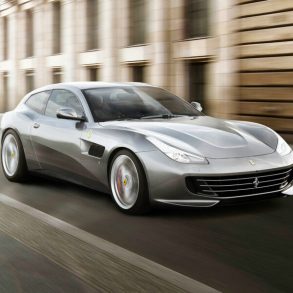
Ferrari GTC4Lusso T
The new GTC4Lusso T is equipped with an evolution of the 3.9-litre V8 turbo which punches 602 hp and 561lb/ft of torque between 3,000 and 5,250 rpm. It is ideal for town driving or long trips. Combining this powertrain with rear-wheel drive has resulted in significant weight-saving. Adding four-wheel steering to the mix gives the car additional agility and quicker responses. The rear-wheel steering is integrated with the electronic controls.
Ferrari F12
F12berlinetta was the third-generation Ferrari GT which follows the 599 GTB Fiorano and 550 Maranello. When released, Ferrari called it the fastest Ferrari ever built and cited a lap time around Fiorano of 1’23”. Every aspect of the F12 improves upon the specification of the 599 GTB Fiorano. This includes upgrades to engine power, aerodynamics, fuel consumption, chassis rigidity, safety and luggage access with a new rear hatch. The F12 moved the performance game on in a big way.
Ferrari F12berlinetta (2012 - 2017)
Ferrari F12tdf (2015 - 2017)

Ferrari F12berlinetta
The highlight of the car is its 65º V12 engine which produces 730 bhp without the aid of turbochargers. Power is sent to the rear wheels through a dual-clutch transmission and an active electronic differential. An insanely capable supercar.

Ferrari F12tdf
The heart, soul, and throbbing essence of the F12tdf is its 6.3-liter masterpiece of mechanical engineering, the Ferrari V-12. It pours out 770 horsepower and 520 lb/ft of twist with a surging mechanical symphony all the way to 8,900 rpm.
Ferrari 488
Forty years on from the unveiling of its first ever mid-rear-engined V8 model, the 308 GTB, the Prancing Horse opened a new chapter in its 8-cylinder history. The Ferrari 488 GTB provided track-level performance that can be enjoyed to the full even by non-professional drivers in everyday use. Its response times, nimbleness and on-the-limit driving guarantee a unique sense of exhilaration and unparalleled driving pleasure. The Ferrari 488 GTB’s new 3902 cc V8 turbo was at the top of its class for power output, torque and response times, making it the new benchmark for this kind of architecture. The engine unleashes 661 hp at 8,000 rpm and a response time to the accelerator of just 0.8 seconds at 2,000 rpm. These figures are sufficient to allow the Ferrari 488 GTB to accelerate from 0-200 km/h in an astonishing 8.3 seconds. The era of the twin-turbo V8 Ferrari was back in a big way.
Ferrari 488 GTB (2015 - 2019)
Ferrari 488 Spider (2016 - 2019)
Ferrari 488 Pista (2018 - 2020)
Ferrari 488 Pista Spider (2018 - 2020)
Ferrari 488 Pista Piloti Ferrari (2020)
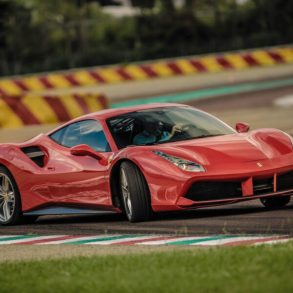
Ferrari 488 GTB
Ferrari’s first turbo-assisted mid-engined car since the iconic F40, and a sea-change in Ferrari’s future car roadmap. And that bodywork isn’t different for change’s sake – there’s a 50 per cent increase in speed-generated downforce, up to 325kg of the stuff. Ferrari also claims even faster gearchanges and even cleverer adaptive suspension.

Ferrari 488 Spider
The roof is impressively clever. It's a two-part folding metal hardtop that can motor itself up or down in 14 seconds and at speeds of up to 25 mph. The performance is even better than the roof. You would be hard-pressed to tell the difference between the Spider and the coupe and for the first time ever, we would say choose the Spider over the coupe.
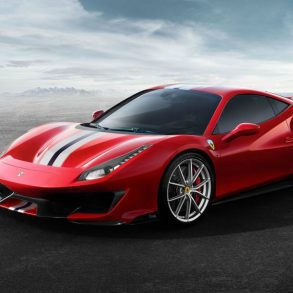
Ferrari 488 Pista
The 488 Pista is the marque’s latest Special Series model and – following in the footsteps of its predecessors – epitomizes the pinnacle of Ferrari road cars. Ferrari’s naturally aspirated V8s shrieked and snarled into the redline. The Pista barks and roars its way there. A different special series animal for sure, but an animal nonetheless. Almost perfect.

Ferrari 488 Pista Spider
The Ferrari 488 Pista Spider is powered by the same engine used in the coupe – a twin-turbocharged 3.9L V8 which produces a magnificent 711-horsepower and 568 lb/ft of torque. It is a convertible with a removal hardtop, though it functions more closely to targa. Weighs 200 pounds more than the coupe.

Ferrari 488 Pista Piloti
Big release from Maranello: To commemorate the 24 Hours of Le Mans, they have created a bespoke version of the 488 Pista, called the ‘Piloti Ferrari’. This tailor-made Ferrari was created and designed for the Ferrari enthusiasts who keep their cars past the showroom and into the race track. It includes Italian livery, a carbon-fiber rear spoiler, and in four racing colors. Only available to customers involved in Ferrari’s motorsport programs.
Ferrari Portofino
We already know that if you want a faster and more performance oriented Ferrari, you wouldn’t be shopping for a Ferrari Portofino. However, the Portofino for what it is - is unquestionably a great improvement over its predecessor. Afterall, it has more power and less weight, while being more enjoyable to drive and arguably, better looking than the California T that it replaced. Auto journalists such as Car Magazine and Car and Driver note that the Portofino is very engaging to drive spiritedly, sans the desire to go around breaking any lap records. Ultimately, the Ferrari Portofino is the amalgamation of what it was designed to be - a Ferrari which offers a unique blend of daily driving practicality, performance, and luxury.
Ferrari Portofino (2017 - 2020)
Ferrari Portofino M (2020 - 2023)

Ferrari Portofino
The Ferrari Portofino struck a chord with those who are cross-shopping in this segment. Interestingly, 70% of buyers of the California T were new customers to the marque. If the Portofino is able to achieve similar success, I would consider that a big win for Ferrari. Was updated to the sharper Portofino M in 2021.
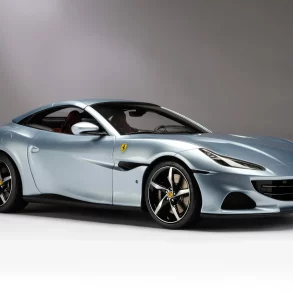
Ferrari Portofino M
The "M" in its name stands for "Modificata," signifying its modified and improved nature. It boasts a more powerful version of the twin-turbocharged V8 engine, now producing 612 horsepower, and a new 8-speed dual-clutch transmission for faster and smoother shifts. Ferrari also added a five-position Manettino switch.
Ferrari 812 Superfast
The Ferrari 812 series represents one of Ferrari’s crowning achievements in front-engine V12 engineering, bringing to life the raw power, elegance, and thrilling experience of Ferrari’s V12 heritage. Launched in 2017 with the 812 Superfast, the series quickly expanded to include the 812 GTS (Ferrari’s first production V12 convertible in decades) and the track-focused, limited-edition 812 Competizione and Competizione A.
Ferrari 812 Superfast (2018 - 2023)
Ferrari 812 GTS (2020 - 2023)
Ferrari 812 Competizione (2022 - 2023
Ferrari 812 Competizione A (2022 - 2023)

Ferrari 812 Superfast
A grand tourer with a whopping 789 hp, wrapped in a curvaceous Italian body, paired to one of the greatest chassis we have ever experienced. With its front-mid-mounted naturally aspirated 6.5L V12 engine and rear-wheel drive layout, it is the latest iteration of Ferrari’s super-GT car and has now been replaced by the open-top variant.

Ferrari 812 GTS
The Ferrari 812 GTS Spider is basically a convertible variant of the 812 Superfast. It debuted as one of the most powerful convertibles in the world, with performance to match. The 812 GTS takes on more of a GT attitude rather than an all-out attack car and is a surprisingly docile daily driver. A perfect daily driving V12 GT for the upper class.

Ferrari 812 Competizione
The 812 Competizione stretches the capabilities of Ferrari's legendary V12 to new heights. The V12 screams defiantly to an ear-shattering 9,250 rpm, cranking out 819 raging horses. Even better? The 812 Competizione is road-legal. The sad part? It's a limited series model with only 999 units planned and they are all sold out.
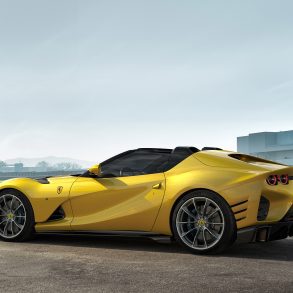
Ferrari 812 Competizione A
The 'A' here stands for Aperta, meaning that this is an open-top variant of the 812 Competizione, allowing you to soak in the mighty roar of the big V12 as the car is being put through its paces. The Competizione A is even more exclusive, limited to 599 units. Just like the coupe, they are all sold out, in spite of the sticker price.
Ferrari F8
The Ferrari F8 series debuted at the 2019 Geneva Motor Show as the successor to the Ferrari 488 GTB, continuing Ferrari’s transition into turbocharged mid-engine supercars that began with the 488. Named “Tributo” to celebrate the success of Ferrari’s V8 engines, the F8 series includes both a coupe (F8 Tributo) and a convertible (F8 Spider) variant. It was fairly shortlived as a model as it was essentially launched to compete with the McLaren 720S that had come to market and was a meaningful step above the 488 in terms of performance.
Ferrari 8F8 Tributo (2019 - 2023)
Ferrari 8F8 Spider (2020 - 2023)
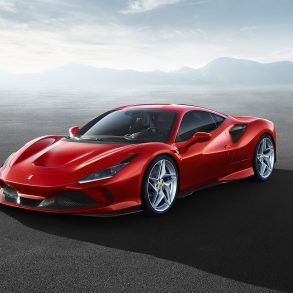
Ferrari F8 Tributo
The Ferrari F8 Tributo is a celebration of Ferrari’s legacy in the V8 segment, representing the pinnacle of the brand’s mid-engine, rear-wheel-drive sports car lineage. Powered by a 3.9-liter twin-turbocharged V8, it has an astounding 710 horsepower and 568 lb-ft of torque. This engine, awarded “International Engine of the Year” multiple times, propels the F8 from 0 to 60 mph in just 2.9 seconds, with a top speed of 211 mph. A worthy follow up to the 488.

Ferrari F8 Spider
The Ferrari F8 Spider, unveiled in 2019, is the open-top counterpart to the F8 Tributo, combining exhilarating performance with the thrill of open-air driving. Powered by the same award-winning 3.9-liter twin-turbocharged V8 engine as the Tributo, the F8 Spider produces 710 horsepower and 568 lb-ft of torque. The F8 Spider’s design incorporates aerodynamic elements like the “S-Duct” on the front and sculpted rear flanks, enhancing downforce and stability even with the top down.
Ferrari Roma
The Ferrari Roma is a captivating grand tourer that occupies a unique space within the Ferrari lineup. Introduced in 2019 as a 2020 model, it marked a departure from the brand's more aggressive and track-focused models, embracing a more elegant and understated aesthetic inspired by classic Ferraris of the 1960s. With its flowing lines, minimalist design, and luxurious interior, the Roma exudes sophistication and refinement, appealing to those seeking a grand touring experience that prioritizes comfort and style without sacrificing performance. The Roma caters to a specific niche within the Ferrari range. It offers a compelling alternative for buyers who desire a front-engined V8 grand tourer with a focus on everyday usability and refined driving dynamics. The Roma's 3.9-liter twin-turbocharged V8 engine, borrowed from the Portofino M but tuned to deliver 612 horsepower.
Ferrari Roma Coupe (2020 - Present)
Ferrari Roma Spider (2024 - Present)

Ferrari Roma
The Ferrari Roma is a grand touring coupe that harkens back to the classic Ferraris of the 1960s, with its elegant and understated design. It features a long hood, flowing lines, and a minimalist interior that exudes luxury and sophistication. Under the hood lies a potent 3.9-liter twin-turbocharged V8 engine, producing 612 horsepower and capable of propelling the Roma from 0 to 60 mph in just 3.4 seconds.

Ferrari Roma Spider
Building upon the Roma coupe's foundation, the Ferrari Roma Spider adds open-top driving excitement to the mix. This convertible variant retains the coupe's elegant design language while incorporating a retractable hardtop that can be deployed or stowed in just 13.5 seconds. The Roma Spider features a unique patented wind deflector integrated into the rear seat backrest.
Ferrari SF90
The SF90 lineup is made up of the Stradale coupe and the Spider, both production cars you can walk onto a lot and buy today. You can also opt for the Assetto Fiorano pack, which is a racing modification pack for the SF90 Stradale or Spider. It uses racing-derived Multimatic shocks and lightweight carbon fibre parts embedded in the door panels and underbody. The Assetto Fiorano also employs a lightweight titanium exhaust system and carbon wheels. These measures save 30 kg (66 lb) compared to the standard SF90 Stradale. For those who take their racing really seriously, there is also the track-focused Ferrari SF90 XX Stradale and Spider, for Ferrari's special and most-exclusive clients.
Ferrari SF90 Stradale (2020 - 2024)
Ferrari SF90 Spider (2021 - 2024)
Ferrari SF90 XX Stradale (2024)
Ferrari SF90 XX Spider (2024)
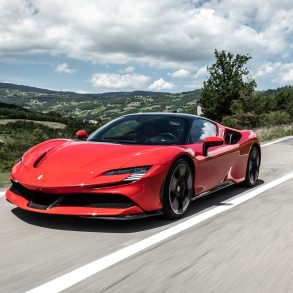
Ferrari SF90 Stradale
Ferrari's first plug-in hybrid blends a potent 4.0-liter twin-turbo V8 engine with three electric motors to unleash a 986 horsepower. This potent combination propels the SF90 Stradale from 0 to 62 mph in a mere 2.5 seconds, making it one of the quickest cars on the planet. With its advanced all-wheel-drive system, torque vectoring, and sophisticated electronic controls.

Ferrari SF90 Spider
The Ferrari SF90 Spider takes the groundbreaking performance of the SF90 Stradale and adds the thrill of open-air driving. This plug-in hybrid convertible boasts the same 986 horsepower hybrid powertrain, combining a 4.0-liter twin-turbocharged V8 with three electric motors, allowing it to rocket from 0 to 62 mph in a mere 2.5 seconds.

Ferrari SF90 XX Stradale/Spider
The Ferrari SF90 XX Stradale and SF90 XX Spider are limited-edition specials that take the already impressive hybrid powertrain of the SF90 and crank it up into an exclusive track-day weapon with 1018 horsepower, extensive aerodynamic upgrades, a fixed rear wing and redesigned bodywork, that generate significantly more downforce.
Ferrari 296
The Ferrari 296 GTB and 296 GTS represent a new era in mid-engined, V6-powered Ferrari sports cars. They share a common platform and powertrain, but each offers a unique character and driving experience. The 296 GTB is a coupe that embodies the essence of Ferrari's mid-engined sports cars. Its sleek and aerodynamic design is a testament to Ferrari's commitment to both beauty and performance. Under the hood, a 3.0-liter, twin-turbocharged V6 engine delivers a staggering 663 horsepower and 546 lb-ft of torque. This power is coupled with a 163-hp electric motor, creating a combined output of 830 horsepower. The 296 GTS, on the other hand, is a convertible that offers the same exhilarating performance as the GTB, but with the added thrill of open-air driving.
Ferrari 296 GTB (2022 - Present)
Ferrari 296 GTS (2023 - Present)
Ferrari 296 Assetto Fiorano (2023 - Present)

Ferrari 296 GTB
The Ferrari 296 GTB is an all-new plug-in hybrid model in the lineup, joining the likes of the SF90 Stradale and SF90 Spider. It marks the start of a trend for Ferrari's GTB models with smaller-displacement engines and hybrid integration as the automotive landscape continues its shift towards electrification.
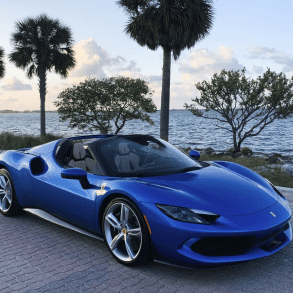
Ferrari 296 GTS
No surprises here. The 296 GTS (short for Gran Turismo Spider) was released shortly after the GTB model. It retains the coupe's hybrid powertrain but as the name implies, the GTS loses the fixed roof for that undiluted open-air experience. We'd take the coupe, but it is hard to argue against the open top 296.

Ferrari 296 Assetto Fiorano
The Ferrari 296 GTB Assetto Fiorano elevates the standard 296 GTB to new heights of performance with lightweight components, aerodynamic enhancements, and track-focused tuning, making it an even more formidable machine on the circuit. Transforms the 296 GTB into a scalpel-sharp weapon.
Ferrari Purosangue
The Ferrari Purosangue, unveiled in 2022, is a groundbreaking model for the Italian marque, representing their first foray into the SUV segment. However, Ferrari steadfastly avoids labeling it an SUV, preferring to call it a "Ferrari Utility Vehicle" or FUV. This distinction highlights its focus on performance and driving dynamics, staying true to Ferrari's sporting heritage. The Purosangue boasts a unique four-door, four-seat configuration with suicide rear doors for easy access. Under the hood lies a naturally-aspirated 6.5-liter V12 engine, producing a staggering 715 horsepower and 528 lb-ft of torque.
Ferrari Purosangue (2023 - Present)

Ferrari Purosangue
The Ferrari Purosangue, Maranello's first-ever four-door, four-seater, rejects the SUV label while embracing its practicality. Its naturally-aspirated V12 engine roars with 715 horsepower, propelling this unique "FUV" with Ferrari's signature performance and handling, thanks to an 8-speed dual-clutch transmission and all-wheel drive.
Ferrari 12Cilindri
In keeping with the likes of the Ferrari LaFerrari’s rather unambiguous name, the new Ferrari 12Cilindri shares with it, a very similar and self-explanatory nomenclature. Honorifically referred to as the Dodici Cilindri—anglicized as Twelve Cylinder—it’s Ferrari’s latest testament to the automaker’s quintessential 6.5L V12 power plant, as its name so readily suggests. Ferrari claims that the chassis is now 15% more rigid compared to the 812 Superfast. Ferrari may just have delivered its most complete car ever. It’s not as visceral or extrovert as its forebears - which might bother some of the hardcore - but that’s hardly an issue when you experience what the 12Cilindri can do. It’s hugely charismatic, beautifully made, and a design and tech leader. That bloodline has just been enriched.
Ferrari 12Cilindri (2025 - Present)
Ferrari 12Cilindri Spider (2025 - Present)

Ferrari 12Cilindri
After the 812, we thought the naturally aspirated V12 GT Ferrari was dead. Apparently not, because we now have the 12Cilinidri. Beneath its sculpted bodywork lies a naturally-aspirated 6.5-liter V12 engine, producing a staggering 819 horsepower – the most powerful V12 ever fitted to a road-going Ferrari. This potent powerplant is mated to a 7-speed dual-clutch transmission, sending power to the rear wheels.
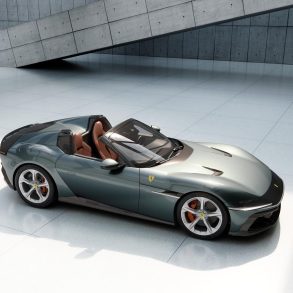
Ferrari 12Cilindri Spider
The Ferrari 12Cilindri Spider takes the exhilarating performance and dramatic design of the 12Cilindri coupe and adds the thrill of open-air driving. This spider features a removable roof panel, allowing drivers to experience the symphony of the naturally-aspirated V12 engine with the wind in their hair. The 12Cilindri Spider shares the same 819-horsepower engine and 7-speed dual-clutch transmission.
Ferrari Supercars
The 250 GTO, a homologation special built for racing in the 1960s, established Ferrari's dominance on the track and set a benchmark for future supercar development. The 288 GTO, born in the 1980s, was a raw and powerful machine that ignited the modern supercar era with its aggressive design and turbocharged engine. The F40, launched in 1987, became an instant icon with its radical styling, lightweight construction, and ferocious performance, solidifying its place as one of the greatest supercars ever built. The F50, introduced in 1995, took technological innovation to new heights with its Formula 1-derived V12 engine and advanced aerodynamics. The Enzo, named after the company's founder, arrived in 2002, showcasing a futuristic design and a powerful V12 engine that delivered blistering performance. The LaFerrari, launched in 2013, marked Ferrari's first foray into hybrid technology, combining a V12 engine with an electric motor to produce an astounding 950 horsepower. The newest member of this amazing group is the F80 and we can't wait to see and hear more about it as it is launched in 2025.
Ferrari 250 GTO (1962 -1964)
Ferrari 288 GTO (1984 - 1985)
Ferrari 288 GTO Evolution (1985)
Ferrari F40 (1987 - 1992)
Ferrari F40 LM (1989 - 1994)
Ferrari F50 (1995 - 1997)
Ferrari F50 GT (1996)
Ferrari Enzo (2002 - 2004)
Ferrari LaFerrari (2013 - 2016)
Ferrari LaFerrari Aperta (2016 - 2018)
Ferrari F80 (2025 - Present)

Ferrari 250 GTO
The 250 GTO model was the pinnacle of development of the 250 GT series in competition form, whilst still being a road car. It made its public debut at the annual pre-season Ferrari press conference in January 1962, and was the only front engine model on display, with its monoposto and sports racing counterparts all having a mid-engine configuration. Learn more
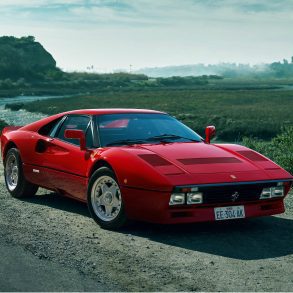
Ferrari 288 GTO
In 1984 Ferrari produced a street-legal car that paradoxically and magically combined the most sublime beauty with a very raw level of performance. The 1984 GTO was a 2.8 liter twin turbocharged V8 with a power output of 400bhp (140bhp / liter) enough to reach 60mph in 5s or less, and with a conservatively rated top speed of 189mph. Learn more
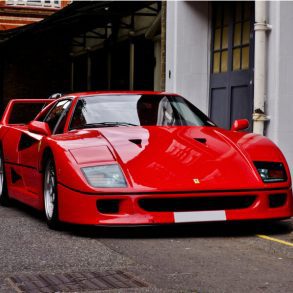
Ferrari F40
To celebrate 40 years of Ferrari, Enzo had his design team create a supercar that translated racing tech to the road, it was the last car built under his supervision before he died. The F40 followed in its path and shared its longitudinal, mid-mounted, twin turbocharged V8 configuration. Power came from a large V8 engine that produced 478 bhp. Learn more
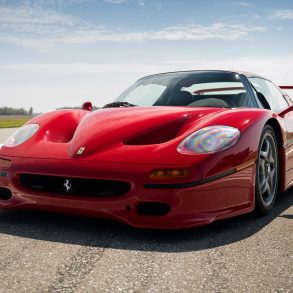
Ferrari F50
Many people have looked upon the F50 project as somewhat of a failure. I can see where they are coming from; the F50 didn't receive a race program and never set any precedents in performance. It is this attitude that is usually held by people how have yet to experience the F50 in person, on track or, better yet, behind the wheel. Learn more
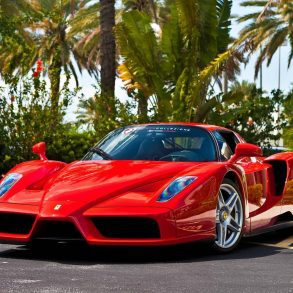
Ferrari Enzo
With no hybrid setup, no turbochargers, nodual-clutch, and wind-up windows, the Ferrari Enzo is the last old-school Ferrari supercar, before the hypercars came around. It is also the last naturally aspirated Ferrari supercar, with a wonderful 6 liter V12 that just screams. With 650bhp, a claimed 3.1s 0-60mph time and a 217 mph top speed, the Enzo had figures that spoke for themselves and backed it up. Learn more

Ferrari LaFerrari
Limited to just 499 examples (an additional 210 Apertas were made), the LaFerrari featured a Formula-One derived HY-KERS system – an electric motor teamed to a 6.3-litre V12. The LaFerrari was part of the new wave of supercars, now called Hypercars. Journalists all agreed that the hardware might be modern, but LaFerrari’s heart remains a screaming naturally aspirated V12 engine. Hypercar indeed. Learn more

Ferrari LaFerrari Aperta
The Ferrari LaFerrari Aperta is the open-top version of the LaFerrari, a limited-production hybrid hypercar that represents the pinnacle of Ferrari's technological prowess. It boasts a removable carbon-fiber hardtop or a lightweight canvas soft top, allowing drivers to choose their preferred level of exposure to the elements. With only 210 units produced, the LaFerrari Aperta is an exclusive hypercar. Learn more

Ferrari F80
Ferrari has a new performance flagship model called the F80, and instead of a howling V-12 engine you'll find a twin-turbo V-6 plug-in hybrid powertrain under its exotic-looking bodywork. That plug-in-hybrid powertrain boasts 1184 horsepower and is said to be capable of launching the F80 to 62 mph in as little as 2.2 seconds. Active aerodynamic elements, an eight-speed dual-clutch automatic transmission. Learn more
Ferrari Icona
The Ferrari Icona series represents a unique chapter in Ferrari’s history, blending cutting-edge technology with design inspired by some of the brand’s most legendary cars. Launched as a limited-production series, the Icona lineup—featuring the Monza SP1, Monza SP2, and Daytona SP3—pays homage to Ferrari’s racing and design legacy while pushing the boundaries of modern supercar performance.
Ferrari Monza SP1 (2019 - 2023)
Ferrari Monza SP2 (2019 - 2023)
Ferrari Daytona SP3 (2023 - Present)
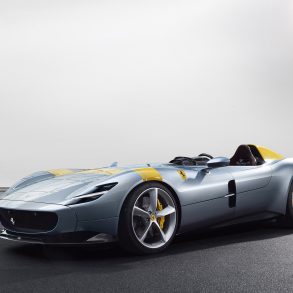
Ferrari Monza SP1
Think of classic Ferraris of the 1950s coupled with the most advanced sports car technology available today and you pretty much nailed it. The first iteration of the program is the Ferrari Monza SP1 and SP2. Both the Monza SP1 and SP2 are based on the Ferrari 812 Superfast and come with a 6.5 liter V12 engine with 810 hp to the rear wheels.
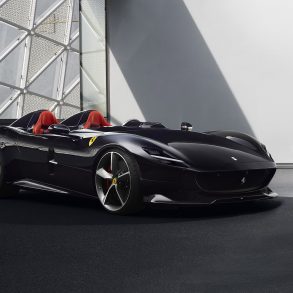
Ferrari Monza SP2
Think of classic Ferraris of the 1950s coupled with the most advanced sports car technology available today and you pretty much nailed it. The first iteration of the program is the Ferrari Monza SP1 and SP2. Both the Monza SP1 and SP2 are based on the Ferrari 812 Superfast and come with a 6.5 liter V12 engine with 810 hp to the rear wheels.
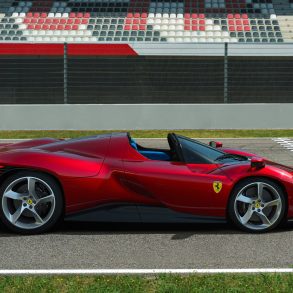
Ferrari Daytona SP3
The Ferrari Daytona SP3 is a limited-production, mid-engined hypercar that pays homage to Ferrari's iconic racing prototypes of the 1960s. Unveiled in 2021 as part of the "Icona" series, it draws inspiration from legendary cars like the 330 P3/4, 330 P4, and 412 P that dominated endurance racing. Powered by a naturally aspirated 6.5-liter V12 derived from the 812 Competizione.



